Talk to our experts
1800-120-456-456
- Agriculture


Introduction to Agriculture
Agriculture is the practice of cultivating plants and livestock in order to provide facilities the human beings. In the rise of the sedentary human lifestyle agriculture was the key development. The cultivation of plant and food grains began years ago in order to provide food to the city population. Agriculture is the main need for the people to live in the society. Agriculture is the main source of livelihood, it provides a source for the people to earn. Most of the population in the rural areas is dependent on agriculture as their main source of income.
Agriculture contributes significantly to a country’s GDP that is the Gross Domestic Production of a country. By the passing of time, there are a number of revolutions that take place in order to improve agriculture throughout the world or a country. If we talk about agriculture, India has witnessed a number of revolutions, that is, the green revolution, yellow revolution, blue revolution, agriculture. Agriculture affects the biodiversity of a country depending upon agricultural activities.
The major agricultural products can be widely grouped into categories of food grains, fibers and raw materials.
Foodgrains included the grains or cereals that have been used for eating. Fiber crops are completely Commercial, they can not be eaten and are completely grown for making money. Raw materials are that category of crops that are completely grown for use as raw materials in industries in order to prepare other items.
This article provided to help you to learn the topic of agriculture about the history of farming, Commercial farming, primitive farming, its characteristics, types of Commercial Farming, intensive subsidence character, and so on. This will help you to get a clear view of agriculture. Let's have a look at it.
History of Agriculture
The development of agriculture enables human civilization to grow rapidly. This agriculture that was started by hunting and gathering has now reached the stage of cultivation and industrial form of agriculture also.
The earliest food crop grown was rice which was followed by Moong, soya, azuki beans, etc. Sheep were domesticated in Mesopotamia first, cattle were domesticated in the areas of modern turkey, pig production emerged in Europe, East Asia, and South Asia. There are many hypotheses that are explained by the scholars for agriculture.
Irrigations, crop cultivation, and fertilizers were the advanced form of agriculture that was developed in the 17th century. Modern agriculture has raised or encountered issues such as water pollution, biofeedback, genetically modified organisms, farm subsidies leading to alternative approaches such as that of organic movements.
In the rise of sedentary human civilization agriculture is the key development. Farming of domestic species provided food surpluses that prompted people to live in cities. The history began some thousands of years ago. Pigs, sheep, and cattle were domesticated over 10000 years ago. Plants were cultivated independently in 11 regions of the world. Industrial agriculture based on a large scale in the 20th century came and dominated agriculture output. An estimated number of around 2 billion people still depend on subsistence agriculture.
The major agricultural products are broadly grouped into foods, fibres, fuels, and raw materials. Over one-third of the world’s workers are employed in agriculture and after that to the service sector.
Commercial Farming
Commercial farming is when farmers grow crops or rear animals for economic activity. Commercial farming needs to be practised on a large scale with more efficiency. The goal of the farmer is to earn profits from farming, hence the production and area of production need to be on a larger scale. This practice is also known as agribusiness and is intensively taken up and practised. It has also opened its doors for a lucrative business venture.
Due to the large production in commercial farming and despite its major benefits, it is a bit worrisome as it includes lots of fertilisers, pesticides, weed killers, and other sorts of chemicals.
Crops in this type of agriculture are completely grown in order to provide the farmers with the benefit of money. These crops are not for you to consume but only for the sale.
Here are Some of the Characteristics of Commercial Agriculture:
Large scale production
It is capital intensive
It uses high yielding varieties
It is produced mainly for sale purpose
Heavy machinery and human labour is used
Traditionally practised all year round.
Types of Commercial Farming include the Following:
Dairy farming
Grain farming
Plantation farming
Livestock ranching
Mixed crop and livestock farming
Fruit farming
Primitive Farming
Primitive farming or also known as simple subsistence farming (farming for the farm-family only) is the oldest form of agriculture and is still prevalent in some areas of the world. Primitive farming enabled people to take a step further on the economic ladder by learning the art of domesticating plants. In this type of farming, farmers grow crops for themselves and their families. The growing of crops is only limited.
Its Characteristics Include the Following:
Sites of farming are selected by experienced elders.
Hill slopes are preferred because of proper drainage
Forests are cleared by fire, as ashes add to the fertility of the soil
This is also called slash and burn agriculture.
The cultivated patches are usually very small
Primitive tools are used in cultivation such as stick and hoe
Intensive Subsistence Agriculture
Intensive subsistence agriculture term is used to describe the type of agriculture which is characterised by high output per unit of land and low output per worker.
Although its nature has changed and is no longer subsistence. These are more sophisticated than primitive agriculture and are also known as monsoon type of agriculture
Very smallholdings
Farming is very intensive
It requires much hand labour
It uses animal and plant manures
The dominance of padi and other food crops
Following are the Types of Subsistence Farming:
Shifting Cultivation: In this method, farmers clear the cultivated land and burn it afterwards. The ashes produced thereafter increase soil fertility. This method is known by different names in different regions. It is further practiced in South America and Southeast Asia. This method is not fit as by exhausting the quality of the soil of one place and then moving to another place for doing the same is not a solution.
Nomadic Herding: It involves herders and farmers traveling from place to place with their group of animals. The herders also provide wool, meat, hide, and dairy products from the livestock. This type of farming is very common in places like Rajasthan, Jammu, and Kashmir. Animals herd here are sheep, goats, camel, and yak
It is quite the opposite of primitive farming. Farmers practice this on wider areas of land, they use modern machinery and add chemical fertilizers for the betterment of crop production.
Whereas in primitive agriculture, all the age-old agricultural practices are done by using the age-old method by which agriculture was done in the past. In the primitive type of agriculture also there is a waste of energy and sources up to some extent without getting a good quality of the crops we were looking for.

FAQs on Agriculture
1. What is Primitive Subsistence Farming Class 10?
This farming is practised on small patches of land with primitive tools. Most often family or community labour is used in this type of farming. It mainly depends on the monsoon and the natural fertility of the soil. Crops are further grown as per climatic and environmental conditions.
This is further called slash and burn agriculture. The ash obtained is useful for crops as it yields better crops. After repetitions of crops grown, the patch extensively used is left shallow and in turn, a new patch is searched for farming. The patch earlier left fallow and unused again replenishes its fertility by the time new crops are grown in the new patch.
2. What is Commercial Grain Farming Practised in India?
It is a major type of agricultural practice in the area of low rainfall and low density of population where extensive farming is practised. Commercial grain farming is in response to farm mechanization. Crops are yielded according to climatic conditions like floods and drought. Monoculture of wheat is the general practice here.
Its characteristic includes the following:
Specialization in a single crop
Farms are very large
Highly mechanized
Lack of irrigation
Dependant on Climatic hazards
Depending on market fluctuations
Farm ownership
Low yield per acre
High yield per man
3. What is Commercial Farming?
Commercial farming is a type of farming where the agricultural crop is grown for sale in exchange for some profit. Its example includes tobacco. India is the second-largest producer of tobacco. It is grown largely in semi-arid and rain-fed areas.
Commercial farming crops are intended for large-scale distribution to wholesalers or retail outlets. Some of the common examples of commercial farming crops include wheat, maize, tea, coffee, sugarcane, cashews, rubber, banana, cotton. These are harvested and sold into world markets. Commercial agriculture also includes livestock production and livestock grazing. Some of the advantages of commercial farming are listed below:
Encourages improvement in local infrastructure
It promotes job creation
Enables lowering of prices of the product
It has provision for raw materials for agribusiness manufacturing companies.
It enables increased productivity and also enhances food security.
4. What does agriculture stand for?
Agriculture describes the practice of growing crops or domesticating animals. The Latin word from which agriculture is divided is agri that means field plus cultural, which means cultivation. Cultivating a piece of land or growing food plants on it on a large basis is what agriculture means. Agriculture is the main reason for livelihood in most parts of the world. In India, nearly 60 percent of the people earn their livelihood through agricultural practices. You can refer to agriculture as the science of raising plants and animals for food, clothing, or other useful products. This is basically the practice of cultivating land and raising livestock in order to meet the need of the people living.
5. What are the three main types of agriculture?
The three main types of agriculture or farming include subsistence farming, Plantation farming, and Shifting agriculture. Subsistence Farming is one that is practiced in most parts of the country to raise plants and livestock. In this method, farmers cultivate on the small piece of scattered land with the help of draught animals. Plantation agriculture was introduced by Britishers in India in the 19th century. In this a piece of land is used completely for growing one type of cash crop, that is a crop that is meant purely for sale. I Shifting agriculture practiced in forest regions, a particular piece of land is used for cultivation and once its nutrients get exhausted they move to another place for cultivating the crops that are for agriculture.
For Teachers
Our resources.
These resources have been created and peer-reviewed by scientist members of the American Society of Agronomy.
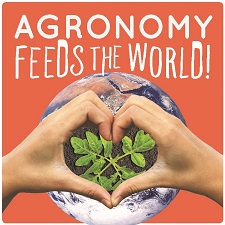
Agronomy @ Work - Watch these videos to learn what agronomists do! Agronomists are plant and soil scientists who work with farmers, companies, and others in the agriculture community to implement the latest methods and tools for growing crops profitably and sustainably.
Agronomy Grow With It! Lesson Plans - A full activity packet has been designed specifically for this site for educators with lessons and hands-on activities related to agronomy and agriculture.
Agronomy 4 Me- Printable Catcher - Students can learn fun facts about agronomy while creating and playing with this "cootie catcher".
Bioenergy Lab Activities - These lab activities, developed by a scientist member of ASA, explore the role of yeast in the production of ethanol and explain how biofuels are produced. Geared toward middle and upper level classrooms.
Biofuels Overview – Want to learn more about biofuels? This overview, developed by the Soil Science Society of America in 2010, provides information on just what biofuels are.
Ethanol Production with Corn Pops! Using Corn Pops, corn meal, and yeast, students will determine which feedstocks yeast prefer for the production of ethanol.
Celery Activity - Use this activity guide to conduct an experiment and observe the location of xylem tissue within the stalk of celery. Expand the concept to discuss nutrient and water movement in a variety of plants!
Circles of the Earth Activity - Circles of the Earth bracelets provide a unique lesson for younger students to learn about life interactions on our planet. Inexpensive materials can be purchased at most craft stores.
Environmental Effects of Bioenergy Feedstocks - In this matching game, participants will track carbon throughout the lifecycle of cellulosic ethanol; from growing switchgrass to conversion to the use of fuel. Ideal for high school chemistry classes!
State Soil Booklets - Interactive map features soil booklets, developed and written by soil scientists to provide in-depth information on each state soil.
Additional Resources
While the following sites are not officially endorsed (with the exception of the Soils4Teachers site), they have a variety of materials and activities at different grade levels. Our scientists have reviewed and approved all of these materials containing accurate, scientific information before posting on our page.
All Grade Levels
Soils4Teachers.org - The Soil Science Society of America has developed this K-12 educator’s website and features lessons/activities, resources, definitions, links and a matrix of seven subject-matter areas categorized by grades K-4, 5-8, and 9-12 and vetted by soil scientists.
National Agriculture in the Classroom – Search this Curriculum Matrix by grade level, content area, common core connections, state specific content, or literacy outcomes.
SARE Learning Center - High school research project? Look no further for sustainable agriculture information. SARE's searchable database can help track down materials, educational guides, research, and more!
Nutrients for Life – Modules are available for elementary, middle and high school classrooms and provide STEM activities and lessons to show how the challenge of feeding our world’s growing population can be solved with science.
National Farm to School Network – Farm to School aims to bring food and agriculture education into schools and early care settings. NFSN offers a searchable resource database for traditional and non-traditional education settings.
Little Red Hen - In this Ag in the Classroom activity for K-2, students will read the story, “The Little Red Hen,” discuss all the different careers involved in producing a loaf of bread, and act out a play based on the story. Students will sprout wheat seeds.
My Farm Web - K-5 Students will learn to relate goods and services to resources within the community by building a web that traces products back to the farm. Courtesy of Utah Ag in the Classroom.
My American Farm - Fun online games for K-5 – for both the classroom and families. Brought to you by the American Farm Bureau Foundation for Agriculture.
The Great Plant Escape – University of Illinois Extension for grades 4-5 - Each of the lessons in this program is interdisciplinary, designed to introduce students to plant science and increase their understanding of how foods grow. A teacher’s guide is also available.
Illuminating Photosynthesis - This Nova page describes the mechanics of photosynthesis while engaging students with three puzzlers and answers about photosynthesis. Great resource for grades 5-8.
Science in your Shopping Cart: High Tech Food - This NAITC lesson plan for grades 6-8 introduces the high-tech aspects of agricultural production and explores the related careers.
Serious Cereal Science - In this National Ag in the Classroom activity for grades 6-8, students will develop an appreciation for the extensive materials and career fields provided by agriculture, specifically as related to cereal grain production, processing, and consumption.
What Makes Plants Grow? - The Institute of Food and Agricultural Sciences offers this adaptable curriculum package for grades 6-8 including learning objectives, lessons, activities, and reflection questions.
Your Food, Farm to Table – This 3- minute YouTube video from International Food Information Council Foundation uses fun infographics to demonstrate how much has changed since farming began- for the farmer and the consumer! Ideal for grades 6-12.
"Bringing Biotechnology to Life" is a resource for science educators and others interested in learning more about biotechnology and its role in food production. This unit of instruction addresses national learning standards for 7th – 10th grade, yet the interest level may be much broader.
Purple Plow is a special project brought to you by the American Farm Bureau Foundation for Agriculture (AFBFA) for middle school and high school. The challenge encourages students to research scenarios related to food, hunger and sustainability and build their own prototypes to solve the defined problem. Resources provided for facilitators, students and volunteers are written by teachers, aligned to national learning standards and reviewed by industry experts.
Fields of Fuel Computer Game - In this game, players—both students and the public—take on the role of farmers working to sustainably grow crops to produce energy resources, earn income and improve ecosystem services. View this video to learn more about how using a video game (like Fields of Fuel) to support reasoning about sustainability.
Seed Germination Demonstration and Plant Biology Discussion - This interactive experiment will guide students to analyze what is necessary for seeds to germinate!
#TeachAg Lesson Plans, Games and Activities
Please encourage your students to consider agricultural education as a career, because without them, there won't be enough ag teachers to keep our programs going.
Use these resources to celebrate & bring awareness to the career of agricultural education, whether it's on NAAE National #TeachAg Day or any day. For details on any of these activites, just click the link.
Ideas for...
- Middle/High School Students
- Postsecondary Students (2-year tech schools)
Adult Farm Business Management Instructors
- University Level - Teacher Educators, Ag Ed Majors, Ag Ed Student Organizations
- State Agricultural Education Leaders (state supervisors, etc.)
Ideas Using Social Media
- #TeachAg Promotional Materials (video, graphics, ringtones, news release templates, state proclomation examples, and more)
- Games & Other Cool Stuff to Promote Agricultural Education as a Career
Missouri NAAE National #TeachAg Day Lesson Plan Contest Resources
Check out these great lesson plans to use in your classroom to promote agricultural education, developed by top-notch ag teachers in Missouri as part of their 2017 NAAE National #TeachAg Day celebrations! Click here to download the zip file.
Ideas for Middle/High School Students
Sample Class Outlines for Middle or High School Use the outlines coupled with the lesson plans below to make NAAE National #TeachAg Day planning easy.
- Class outline for 40-50 minute period
- Class outline for 75-85 minute period
Other Activities and Ideas
- Have a student who you think would be a good ag teacher? Send them a Tagged to #TeachAg Kit !
- Play "Are You Smarter than your Ag Teacher?" Details and download games
- Have the students be the teacher for the day. Put them in charge of the class for 10 minutes; they have to create a meaningful lesson on a topic of their choice with instructor preapproval. Lesson plan
- Research the duties, salary, job outlook, education, etc. needed to become an ag teacher or other agricultural education professional. Lesson plan
- Share your individual path to becoming an ag teacher and encourage your students to ask you questions about your career. Lesson plan
- Host a university agricultural education student or former student who is currently an ag teacher from your program to share his or her experiences. Lesson plan
- Host a Farm Business Management instructor to talk about his or her job. Lesson plan
- If you have a student or students who are interested in teaching agriculture, line up a job shadowing experience with a teacher at a nearby program. Activity guide
- Set-up a PALS program in your school or make arrangements for students who are interested in being an ag teacher design and present lessons to the elementary and junior high on agriculture.
- Bring in representatives from the ag education department at the colleges in your state that offer ag education. Use the college finder here on the #TeachAg Website for a listing of universities.
back to top
Post-Secondary Students (2-year technical schools)
- Give each student a slip of paper with a career related to agriculture on it. Have them research and share with the rest of the class how agricultural education plays a role in the prosperity of that career. Lesson Plan
- Play "Are You Smarter than your Ag Teacher?." Details and download games
- Have your students contact a nearby high school ag program and shadow the teacher for a day. Lesson plan
- Arrange an event on campus about agricultural education or set up a booth or display in a high-traffic area. Activity guide
- Host a departmental open house for students, members of the community, and other school personnel. Activity guide
- Send a letter to those enrolled in your program thanking them for allowing you to be an ag teacher. Example
- Contact a local high school and talk to the class about how having a degree in agricultural education can lead to many different career paths, like being a farm business management instructor. Example
- Hold an appreciation event for all the other agricultural educators in the region/district.
- Host an open house for students, members of the community, and other school personnel. Activity guide
University level: Teacher Educators, Ag Ed Majors, & Ag Ed Student Organizations
- Set up a booth in an area of campus where agricultural education might not be as widely recognized and pass out literature about being an ag teacher. Activity guide
- Have ag ed students write a letter to their high school principal, superintendent, or other administrator thanking them for having an ag program and talking about how their ag teacher has influenced their lives.
- Play "Are You Smarter than your Ag Teacher? " Details and download games
- Create an ag education major mentoring program with new or transfer students and junior/senior ag education majors. Activity guide
- Contact local high school ag programs and ask if you can be part of the NAAE National #TeachAg Day celebration in their school.
- Host a high school student for the day and have them attend classes with you. Give them a tour of your school and introduce them to the agricultural education professors. Activity guide
Ideas for State Agricultural Education Leaders
- Create a personalized letter for students you think would make good ag teachers. Include information about why you think he or she would be a good ag teacher as well as information about the career. You may even want to send a carbon copy to the parents. Letter Example
- Invite ag ed undergraduates to your summer ag teachers conference and offer workshops designed for undergraduates and first year teachers.
- Recognize senior students who will be majoring in ag education on stage at the State FFA Convention. Contact Ellen Poeschl for more information about #TeachAg Signing Events.
- Implement a #TeachAg CDE at your State FFA Convention.
- Have students create mini commercials about their ag teacher and show the commercials at convention or at the summer ag teachers conference.
- Work with other leaders in your state and offer a #TeachAg Workshop at State FFA Convention for students considering a career in ag education. Workshop can be open to anyone or by special invitation only. Give each attending teacher a few Tagged to #TeachAg stickers with their registration packet to designate students selected for the workshop. Access sticker templates here. | Workshop planning resources
Ideas for Everyone
- Organize a visit to your state legislative body on NAAE National #TeachAg Day to talk with lawmakers about agricultural education and the importance of ag teachers in your state. Use NAAE's Legislative Action Center to help plan your visit.
- Send a letter of appreciation to ag teachers in your state (state supervisors and Alumni or advisory boards). Example
- Mentor and connect with new teachers in your state to encourage them to stay in the profession.
Twitter: Challenge yourself to share an agricultural education story in 140 characters or thread your story throughout the day with multiple tweets. Tag us with @Teach_Ag or use hashtag #teachag. Follow the #TeachAg feed to stay up to date with ag ed, learn about scholarship opportunities, or stay focused on your goals of becoming an agriculture teacher.
Sample tweets:
- Get tagged to #TeachAg.
- College- and career-ready thanks to ag ed! #TeachAg
- Ag teachers teach by doing, not just telling. #TeachAg
- Teach the new 3Rs: rigor, relevance, and relationships. #TeachAg
- How do you feed 7 billion people? #TeachAg
- Vet science, ecotourism, floral design, & nanotechnology under one major. #TeachAg
- Ag ed: a special blend of tradition and the future. #TeachAg
- Want a career with flexibility, variety, and travel? #TeachAg
- No two days are the same in one program & no two programs are the same. #TeachAg
Facebook: Tag your friends to #TeachAg with a status update, or write your ag ed story as your status or on our Facebook wall; don't forget that you can tag your local program, agriculture teacher, media, and supportive local businesses with the @ symbol and their name. You can also post to your legislator's Facebook wall. Don't forget that you can use Facebook to facilitate event planning. "Like" the Teach Ag page to stay up to date with ag ed, learn about scholarship opportunities, and stay focused on your goals of becoming an agriculture teacher.
Sample updates from students:
- I’m tagged to #TeachAg! @Teach Ag
- Agriculture is the nation’s largest employer with 28 million jobs. Thanks @[your instructor] for giving me career skills!
- There are over 11,000 ag teachers in the US, but mine is the best. Thanks, @[your instructor]
- FFA taught me leadership; my SAE gave me experience; Ag Ed brought it together in one classroom. @Teach Ag
- Ag is my only class that uses all five senses. Thank you @[your instructor]
Sample updates from teachers:
- Today, I’m tagging @[insert student] to teach ag!
- I love being an ag teacher because [insert reason] @Teach Ag
- There are 800,000 ag students nationwide but I have the best every year. @Teach Ag
- I know what the future leaders look like because I teach ag. @Teach Ag
- Why try to explain miracles to kids when you can have them plant a garden, raise a calf, or look at an atomic structure? @Teach Ag
Sample updates from anyone:
- @[insert friend], I’m tagging you to teach ag!
- Never have the same day twice! #TeachAg! @[insert friend]
- Be a trendsetter and know the latest technology! Think about teaching ag! @[insert friend]
Instagram: Post a picture of the great things your are doing in your ag program! #teachag
Blog: Write a blog post about agriculture education and send us the link.
Sample posts prompts:
- What role does agricultural education play in your community? Think of your current ag program, alumni groups, local businesses, industry supporters, and those who might not even realize the connection.
- How has agriculture impacted your life?
- Why are you studying to be an ag teacher or why did you become one?
- What the one thing that you wish everyone knew about ag education?
- Should STEM change to STEAM?
Video: Post a video to YouTube and send us the link.
General Tips:
- Link to outside information.
- Use active verbs.
- Alternate facts and a story.
Use this Powerpoint game to challenge your students. A fun way to get them thinking about the knowledge and skills required to become an agricultural educator. You can also change the answers and questions on the template and use as a review tool for any subject.
Download game Download instructions

NAAE Sponsor Partners

Terms of Use Contact Us Join Us NAAE Brand Center Site Map
2024 Copyright NAAE One Paragon Centre, 2525 Harrodsburg Road, Suite 200, Lexington, KY 40504-3358 (859) 967-2892 or (800) 509-0204
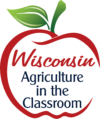
Hands on Activities – Book One
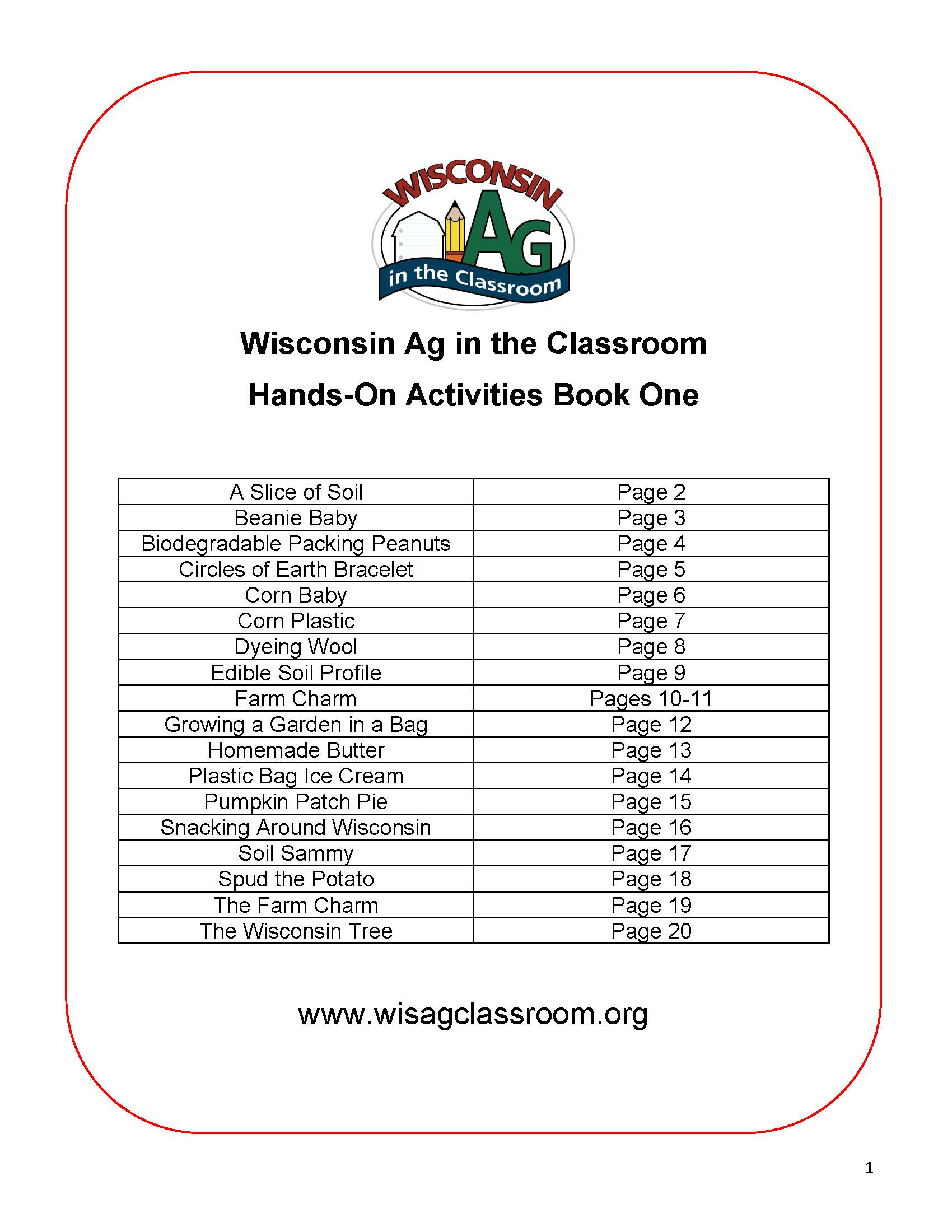
Hands-on learning is important for many students. In addition to being able to more fully understand educational and agricultural concepts, students will have fun completing these activities. This booklet provides step-by-step instructions and a list of materials needed for the activity to make coordinating educational activities fun and simple.
You must be logged in to post a comment.

An official website of the United States government
Here’s how you know
Official websites use .gov A .gov website belongs to an official government organization in the United States.
Secure .gov websites use HTTPS A lock ( Lock A locked padlock ) or https:// means you’ve safely connected to the .gov website. Share sensitive information only on official, secure websites.
JavaScript appears to be disabled on this computer. Please click here to see any active alerts .
Climate Change Impacts on Agriculture and Food Supply
There are over two million farms in the United States, and more than half the nation’s land is used for agricultural production. 1 The number of farms has been slowly declining since the 1930s, 2 though the average farm size has remained about the same since the early 1970s. 3 Agriculture also extends beyond farms. It includes industries such as food service and food manufacturing.
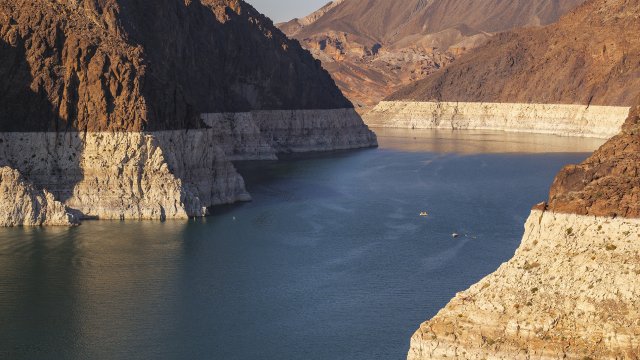
Drought. Since early 2020, the U.S. Southwest has been experiencing one of the most severe long-term droughts of the past 1,200 years. Multiple seasons of record low precipitation and near-record high temperatures were the main triggers of the drought. 37
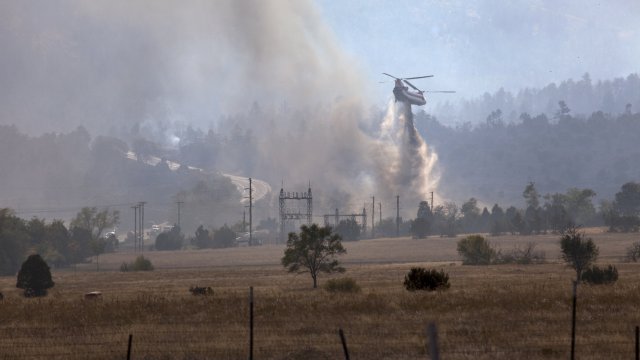
Wildfires. Some tribal communities are particularly vulnerable to wildfires due to their often-remote locations and lack of firefighting resources and staff. 38 In addition, because wildfire smoke can travel long distances from the source fire, its effects can be far reaching, especially for people with certain medical conditions or who spend long periods of time outside.
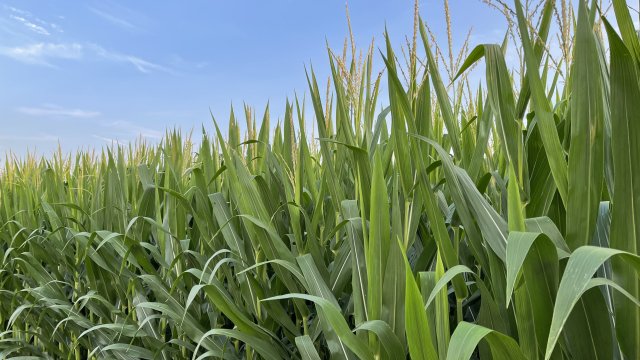
Decreased crop yields. Rising temperatures and carbon dioxide concentrations may increase some crop yields, but the yields of major commodity crops (such as corn, rice, and oats) are expected to be lower than they would in a future without climate change. 39
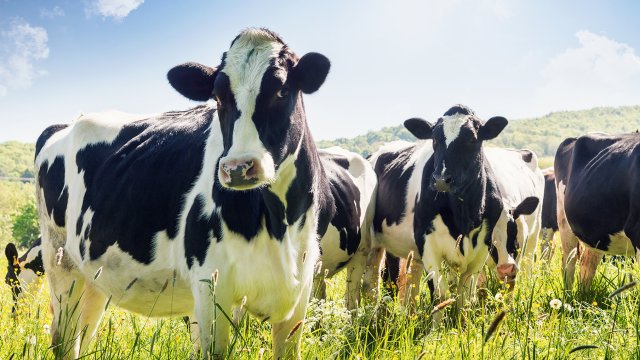
Heat stress. Dairy cows are especially sensitive to heat stress, which can affect their appetite and milk production. In 2010, heat stress lowered annual U.S. dairy production by an estimated $1.2 billion. 40
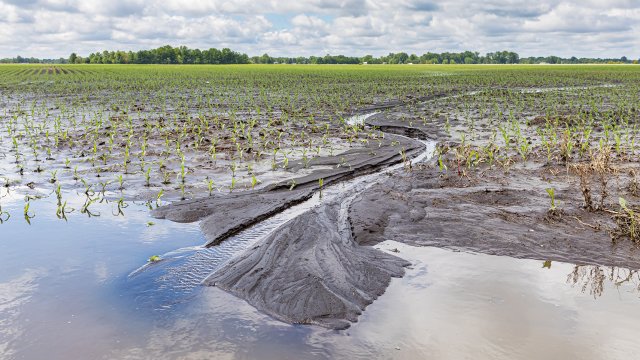
Soil erosion. Heavy rainfalls can lead to more soil erosion, which is a major environmental threat to sustainable crop production. 41
Agriculture is very sensitive to weather and climate. 4 It also relies heavily on land, water, and other natural resources that climate affects. 5 While climate changes (such as in temperature, precipitation, and frost timing) could lengthen the growing season or allow different crops to be grown in some regions, 6 it will also make agricultural practices more difficult in others.
The effects of climate change on agriculture will depend on the rate and severity of the change, as well as the degree to which farmers and ranchers can adapt. 7 U.S. agriculture already has many practices in place to adapt to a changing climate, including crop rotation and integrated pest management . A good deal of research is also under way to help prepare for a changing climate.
Learn more about climate change and agriculture:
Top Climate Impacts on Agriculture
Agriculture and the economy, environmental justice and equity, what we can do, related resources, the link between agriculture and climate change.

Climate change can affect crops, livestock, soil and water resources, rural communities, and agricultural workers. However, the agriculture sector also emits greenhouse gases into the atmosphere that contribute to climate change.
Read more about greenhouse gas emissions on the Basics of Climate Change page.
Learn how the agriculture sector is reducing methane emissions from livestock waste through the AgSTAR program . For a more technical look at emissions from the agriculture sector, take a look at EPA's Greenhouse Gas Emissions Inventory chapter on agriculture activities in the United States .
Climate change may affect agriculture at both local and regional scales. Key impacts are described in this section.
1. Changes in Agricultural Productivity
Climate change can make conditions better or worse for growing crops in different regions. For example, changes in temperature, rainfall, and frost-free days are leading to longer growing seasons in almost every state. 8 A longer growing season can have both positive and negative impacts for raising food. Some farmers may be able to plant longer-maturing crops or more crop cycles altogether, while others may need to provide more irrigation over a longer, hotter growing season. Air pollution may also damage crops, plants, and forests. 9 For example, when plants absorb large amounts of ground-level ozone, they experience reduced photosynthesis, slower growth, and higher sensitivity to diseases. 10
Climate change can also increase the threat of wildfires . Wildfires pose major risks to farmlands, grasslands, and rangelands. 11 Temperature and precipitation changes will also very likely expand the occurrence and range of insects, weeds, and diseases. 12 This could lead to a greater need for weed and pest control. 13
Pollination is vital to more than 100 crops grown in the United States. 14 Warmer temperatures and changing precipitation can affect when plants bloom and when pollinators , such as bees and butterflies, come out. 15 If mismatches occur between when plants flower and when pollinators emerge, pollination could decrease. 16
2. Impacts to Soil and Water Resources
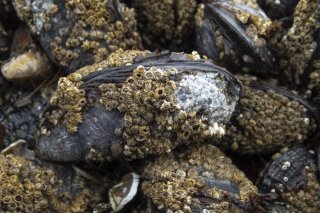
Climate change is expected to increase the frequency of heavy precipitation in the United States, which can harm crops by eroding soil and depleting soil nutrients. 18 Heavy rains can also increase agricultural runoff into oceans, lakes, and streams. 19 This runoff can harm water quality.
When coupled with warming water temperatures brought on by climate change, runoff can lead to depleted oxygen levels in water bodies. This is known as hypoxia . Hypoxia can kill fish and shellfish. It can also affect their ability to find food and habitat, which in turn could harm the coastal societies and economies that depend on those ecosystems. 20
Sea level rise and storms also pose threats to coastal agricultural communities. These threats include erosion, agricultural land losses, and saltwater intrusion, which can contaminate water supplies. 21 Climate change is expected to worsen these threats. 22
3. Health Challenges to Agricultural Workers and Livestock
Agricultural workers face several climate-related health risks. These include exposures to heat and other extreme weather, more pesticide exposure due to expanded pest presence, disease-carrying pests like mosquitos and ticks, and degraded air quality. 23 Language barriers, lack of health care access, and other factors can compound these risks. 24 Heat and humidity can also affect the health and productivity of animals raised for meat, milk, and eggs. 25
For more specific examples of climate change impacts in your region, please see the National Climate Assessment .
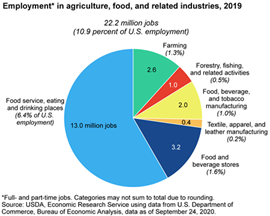
Agriculture contributed more than $1.1 trillion to the U.S. gross domestic product in 2019. 26 The sector accounts for 10.9 percent of total U.S. employment—more than 22 million jobs. 27 These include not only on-farm jobs, but also jobs in food service and other related industries. Food service makes up the largest share of these jobs at 13 million. 28
Cattle, corn, dairy products, and soybeans are the top income-producing commodities . 29 The United States is also a key exporter of soybeans, other plant products, tree nuts, animal feeds, beef, and veal. 30
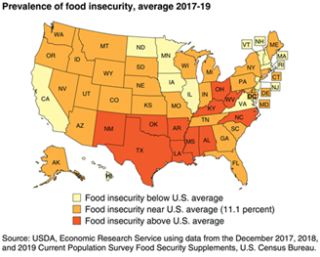
Many hired crop farmworkers are foreign-born people from Mexico and Central America. 31 Most hired crop farmworkers are not migrant workers; instead, they work at a single location within 75 miles of their homes. 32 Many hired farmworkers can be more at risk of climate health threats due to social factors, such as language barriers and health care access.
Climate change could affect food security for some households in the country. Most U.S. households are currently food secure . This means that all people in the household have enough food to live active, healthy lives. 33 However, 13.8 million U.S. households (about one-tenth of all U.S. households) were food insecure at least part of the time in 2020. 34 U.S. households with above-average food insecurity include those with an income below the poverty threshold, those headed by a single woman, and those with Black or Hispanic owners and lessees. 35
Climate change can also affect food security for some Indigenous peoples in Hawai'i and other U.S.-affiliated Pacific islands. Climate impacts like sea level rise and more intense storms can affect the production of crops like taro, breadfruit, and mango. 36 These crops are often key sources of nutrition and may also have cultural and economic importance.

We can reduce the impact of climate change on agriculture in many ways, including the following:
- Incorporate climate-smart farming methods. Farmers can use climate forecasting tools, plant cover crops, and take other steps to help manage climate-related production threats.
- Join AgSTAR. Livestock producers can get help in recovering methane , a potent greenhouse gas, from biogas created when manure decomposes.
- Reduce runoff. Agricultural producers can strategically apply fertilizers, keep their animals out of streams, and take more actions to reduce nutrient-laden runoff.
- Boost crop resistance. Adopt research-proven ways to reduce the impacts of climate change on crops and livestock , such as reducing pesticide use and improving pollination.
- Prevent food waste. Stretch your dollar and shrink your carbon footprint by planning your shopping trips carefully and properly storing food . Donate nutritious, untouched food to food banks and those in need.
See additional actions you can take, as well as steps that companies can take, on EPA’s What You Can Do About Climate Change page.
Related Climate Indicators
Learn more about some of the key indicators of climate change related to this sector from EPA’s Climate Change Indicators :
- Seasonal Temperature
- Freeze-Thaw Conditions
- Length of Growing Season
- Growing Degree Days
- Fifth National Climate Assessment, Chapter 11: “Agriculture, Food Systems, and Rural Communities."
- National Agricultural Center . Provides agriculture-related news from all of EPA through a free email subscription service.
- U.S. Department of Agriculture (USDA) Economic Research Service . Produces research, information, and outlook products to enhance people’s understanding of agriculture and food issues.
- USDA Environmental Quality Incentives Program . Provides financial and technical assistance to agricultural producers to address natural resource concerns.
- USDA Climate Hubs . Connects farmers, ranchers, and land managers with tools to help them adapt to climate change impacts in their area.
- USDA Rural Development . Promotes economic development in rural communities. Provides loans, grants, technical assistance, and education to agricultural producers and rural residents and organizations.
- National Integrated Drought Information System . Coordinates U.S. drought monitoring, forecasting, and planning through a multi-agency partnership. The U.S. Drought Monitor assesses droughts on a weekly basis.
- Sustainable Management of Food . Provides tools and resources for preventing and reducing wasted food and its associated impacts over the entire life cycle.
- Resources, Waste, and Climate Change . Learn how reducing waste decreases our carbon footprint and what business, communities, and individuals can do.
1 U.S. Department of Agriculture (USDA), Economic Research Service (ERS). (2022). Ag and food statistics: Charting the essentials. Farming and farm income . Retrieved 3/18/2022.
2 USDA, ERS. (2022). Ag and food statistics: Charting the essentials. Farming and farm income . Retrieved 3/18/2022.
3 USDA, ERS. (2022). Ag and food statistics: Charting the essentials. Farming and farm income . Retrieved 3/18/2022.
4 Walsh, M.K., et al. (2020). Climate indicators for agriculture . USDA Technical Bulletin 1953. Washington, DC, p. 1.
5 Gowda, P., et al. (2018). Ch. 10: Agriculture and rural communities . In: Impacts, risks, and adaptation in the United States: Fourth national climate assessment, volume II . U.S. Global Change Research Program, Washington, DC, p. 393.
6 Walsh, M.K., et al. (2020). Climate indicators for agriculture . USDA Technical Bulletin 1953. Washington, DC, p. 22.
7 Gowda, P., et al. (2018). Ch. 10: Agriculture and rural communities . In: Impacts, risks, and adaptation in the United States: Fourth national climate assessment, volume II . U.S. Global Change Research Program, Washington, DC, p. 393.
8 Gowda, P., et al. (2018). Ch. 10: Agriculture and rural communities . In: Impacts, risks, and adaptation in the United States: Fourth national climate assessment, volume II . U.S. Global Change Research Program, Washington, DC, p. 401.
9 Nolte, C.G., et al. (2018). Ch. 13: Air quality . In: Impacts, risks, and adaptation in the United States: Fourth national climate assessment, volume II . U.S. Global Change Research Program, Washington, DC, p. 513.
10 EPA. (2022). Ecosystem effects of ozone pollution . Retrieved 3/18/2022.
11 Gowda, P., et al. (2018). Ch. 10: Agriculture and rural communities . In: Impacts, risks, and adaptation in the United States: Fourth national climate assessment, volume II . U.S. Global Change Research Program, Washington, DC, p. 401.
12 Ziska, L., et al. (2016). Ch. 7: Food safety, nutrition, and distribution . In: The impacts of climate change on human health in the United States: A scientific assessment . U.S. Global Change Research Program, Washington, DC, p. 197.
13 Ziska, L., et al. (2016). Ch. 7: Food safety, nutrition, and distribution . In: The impacts of climate change on human health in the United States: A scientific assessment . U.S. Global Change Research Program, Washington, DC, p. 197.
14 USDA. Pollinators . Retrieved 3/18/2022.
15 Walsh, M.K., et al. (2020). Climate indicators for agriculture . USDA Technical Bulletin 1953. Washington, DC, p. 20.
16 Walsh, M.K., et al. (2020). Climate indicators for agriculture . USDA Technical Bulletin 1953. Washington, DC, p. 40.
17 Gowda, P., et al. (2018). Ch. 10: Agriculture and rural communities . In: Impacts, risks, and adaptation in the United States: Fourth national climate assessment, volume II . U.S. Global Change Research Program, Washington, DC, p. 405.
18 Gowda, P., et al. (2018). Ch. 10: Agriculture and rural communities . In: Impacts, risks, and adaptation in the United States: Fourth national climate assessment, volume II . U.S. Global Change Research Program, Washington, DC, p. 409.
19 Gowda, P., et al. (2018). Ch. 10: Agriculture and rural communities . In: Impacts, risks, and adaptation in the United States: Fourth national climate assessment, volume II. U.S. Global Change Research Program, Washington, DC, p. 409.
20 Gowda, P., et al. (2018). Ch. 10: Agriculture and rural communities . In: Impacts, risks, and adaptation in the United States: Fourth national climate assessment, volume II. U.S. Global Change Research Program, Washington, DC, p. 405.
21 Gowda, P., et al. (2018). Ch. 10: Agriculture and rural communities . In: Impacts, risks, and adaptation in the United States: Fourth national climate assessment, volume II . U.S. Global Change Research Program, Washington, DC, p. 405.
22 Gowda, P., et al. (2018). Ch. 10: Agriculture and rural communities . In: Impacts, risks, and adaptation in the United States: Fourth national climate assessment, volume II . U.S. Global Change Research Program, Washington, DC, p. 405.
23 Gamble, J.L., et al. (2016). Ch. 9: Populations of concern . In: The impacts of climate change on human health in the United States: A scientific assessment . U.S. Global Change Research Program, Washington, DC, pp. 247–286.
24 Hernandez, T., and S. Gabbard. (2019). Findings from the National Agricultural Workers Survey (NAWS) 2015–2016: A demographic and employment profile of United States farmworkers . Department of Labor, Employment and Training Administration, Washington, DC, pp. 10–11 and pp. 40–45.
25 Walsh, M. K., et al. (2020). Climate indicators for agriculture . USDA Technical Bulletin 1953. Washington, DC, p. 20.
26 USDA, ERS. (2022). Ag and food statistics: Charting the essentials . Retrieved 3/18/2022.
27 USDA, ERS. (2022). Ag and food statistics: Charting the essentials . Retrieved 3/18/2022.
28 USDA, ERS. (2022). Ag and food statistics: Charting the essentials . Retrieved 3/18/2022.
29 USDA, ERS. (2022). Farm income and wealth statistics/cash receipts by commodity . Retrieved 3/18/2022.
30 USDA, ERS. (2022). Farm income and wealth statistics/cash receipts by commodity . Retrieved 3/18/2022.
31 USDA, ERS. (2020). Farm income and wealth statistics/cash receipts by state . Retrieved 5/11/2022.
32 USDA, ERS. (2020). Farm income and wealth statistics/cash receipts by state . Retrieved 5/11/2022.
33 USDA, ERS. (2020). Farm income and wealth statistics/cash receipts by state . Retrieved 5/11/2022.
34 Coleman-Jensen, A., et al. (2020). Household food security in the United States in 2020 , ERR-298, USDA, ERS, p. v.
35 Coleman-Jensen, A., et al. (2020). Household food security in the United States in 2020 , ERR-298, USDA, ERS, p. v.
36 Keener, V., et al. (2018). Ch. 27: Hawai‘i and U.S.-affiliated Pacific islands . In: Impacts, risks, and adaptation in the United States: Fourth national climate assessment, volume II . U.S. Global Change Research Program, Washington, DC, p. 1269.
37 Mankin, J.S., et al. (2021). NOAA Drought Task Force report on the 2020–2021 southwestern U.S. drought. National Oceanic and Atmospheric Administration (NOAA) Drought Task Force; NOAA Modeling, Analysis, Predictions and Projections Programs; and National Integrated Drought Information System, p 4.
38 Gowda, P., et al. (2018). Ch. 10: Agriculture and rural communities . In: Impacts, risks, and adaptation in the United States: Fourth national climate assessment, volume II . U.S. Global Change Research Program, Washington, DC, p. 401.
39 Gowda, P., et al. (2018). Ch. 10: Agriculture and rural communities . In: Impacts, risks, and adaptation in the United States: Fourth national climate assessment, volume II . U.S. Global Change Research Program, Washington, DC, p. 409.
40 Gowda, P., et al. (2018). Ch. 10: Agriculture and rural communities . In: Impacts, risks, and adaptation in the United States: Fourth national climate assessment, volume II . U.S. Global Change Research Program, Washington, DC, p. 407.
41 Gowda, P., et al. (2018). Ch. 10: Agriculture and rural communities . In: Impacts, risks, and adaptation in the United States: Fourth national climate assessment, volume II . U.S. Global Change Research Program, Washington, DC, p. 415.
- Climate Change Impacts Home
- Agriculture and Food Supply
- Air Quality
- Built Environment
- Freshwater Resources
- Ocean and Marine Resources
- Transportation
- Human Health
- State and Regional Impacts
- Climate Equity
Caution: you have javascript disabled. Your site experience may be affected.
Login to MyBinber
Forgot password
Don't have an account? Create one now!
View a MyBinber tutorial
Classroom Resources
Agriculture activity sheets.
Each activity sheet is available in three different formats:
- Early Childhood
- Elementary School
- Middle/High School
These activity sheets are front and back tear sheets and are in sets of 25. To view the activity sheets online, click the grade level below each specialty crop. Each activity sheet has QR codes to scan. When you receive the printed version you can scan the QR Codes for more exploration. To access the sites linked to the QR Codes online, click on the matching words under each grade level. For instance, the Early Childhood Alpaca page has a QR code for "Cool Facts about Alpacas." You can click "Cool Facts about Alpacas" under the Alpaca Early Childhood link to go straight to the link online.
- Learn More about Alpacas
- Cool Facts about Alpacas
- Alpaca Farms in Oklahoma
- Llamas vs Alpacas
Beef Cattle
- Grady's in the Silo
- The Real Grady the Cow
- Pasture to Plate
- Beef Ag Mag
- Every Cut of Meat Explained
- Chicken Dance with a Chick
- Eggs 101- Scroll to Eggs Part 1 Video
- Virtual Field Trip- Scroll to Barns Video
- Types of Corn
- How Popcorn is Made
- Fruit, Vegetable, or Grain
- Made of Cotton
- How Cotton is Processed
Dairy Cattle
- Milking Cows
- Ice Cream in a Bag
- Robotic Milker
- How Cheese is Made
- The Three Billy Goats Gruff
- Learn More about Goats
- Before Buying Goats
- Watch these Curious Goats
- Horses on the Farm
- Interesting Horse Video
- List of over 100 Horse Breeds
- Mushroom Pizza Recipe
- How do Mushrooms Grow
- From Peanuts to Peanut Butter
- George Washington Carver
- Big Mac Song
- Oklahoma Sesame Seeds
- Ethiopia Sesame
- Sesame Grown Commercially
- Sheep Shearing
- My Family's Soybean Farm
- Full of Beans
- Meet Brent Hajek
- Breaking the World Land Speed Record
- Build a Pig Barn STEM
- How Wheat Grows
- Wheat in Oklahoma
- Wheat to Flour
- Skip to primary navigation
- Skip to main content
- Skip to primary sidebar
Teaching Expertise
- Classroom Ideas
- Teacher’s Life
- Deals & Shopping
- Privacy Policy
Agricultural Activities For Middle School: Experiments, Art Projects, Challenges, And More
March 15, 2024 // by Jill Webb
Middle school agricultural education students have a variety of topics they can learn about- from environmental sciences and animal science to learning about a career in agriculture – there is so much to cover! Below are resources for agriculture teachers on classroom activities for middle school students.
1. Sweet Potato Slips
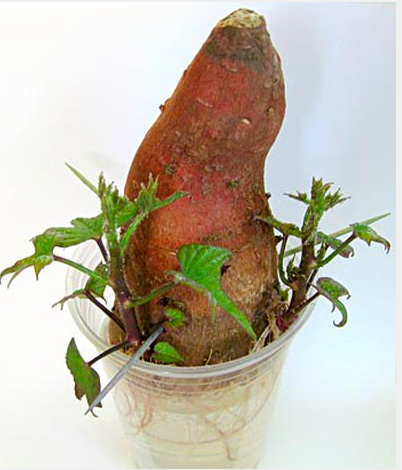
Hands-on learning that includes an activity guide, this experiment will teach students about the biology and life cycle of plants by sprouting potatoes.
Learn More: Science Buddies
2. Precision Agriculture Activity
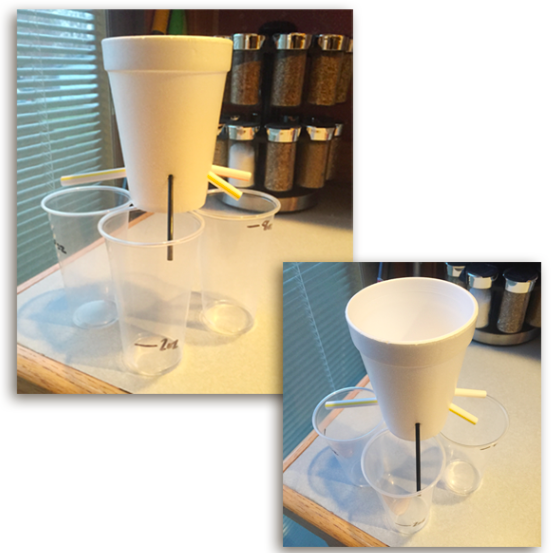
This activity teaches students about how farmers will need to produce more food with the same resources as the years pass by. There are links to videos that students will watch to introduce them to the food crisis, then they will work on an experiment focusing on the efficiency of farming.
Learn More: National Agriculture in the Classroom
3. Pen Pal Program
A great way to introduce students who live in areas with few farms is by doing this pen pal activity. Students will write a letter to students who live on farms. They can ask questions like what daily life is like and learn about farming through a peer.
Learn More: Cabot Farmer
4. Farm Tour or Virtual Farm

Make arrangements for students to visit a farm or hold a farm tour students attend virtually. They can learn more about the different types of agriculture and career paths.
Learn More: Virtual Farm Trips
5. Labels for Animal Science – Organ Study

Gain some knowledge of animal science with this fun Play-Doh activity! Students will learn about the systems of different animals and label the parts.
6. Soil Study
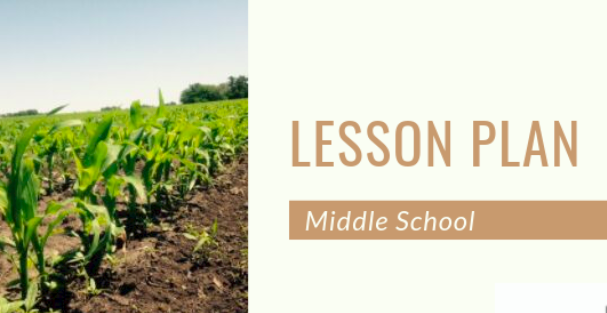
In this lesson, students learn soil science concepts specifically looking at pH and how it affects soil and plant growth. It is a lab for students that uses a variety of soils and pH strips.
Learn More: Iowa Agriculture Literacy Foundation
7. Plant Foldable
For this foldable activity, students will learn about the basic plant nutrients. It helps to answer why each is important and how deficiencies affect plants.
Learn More: Nutrients for Life Foundation
8. Basics of Plant Taxonomy

Downloadable activities to work on plant identification skills and how to classify them. It is an easy download game board that you can print and play.
Learn More: Teachers Pay Teachers
9. Soil Composition
Natural resources, like soil, are important in ag sci. Students must understand the components of soil and what that means for growing plants. This activity is an easy introduction to observing soil parts.
Learn More: Education
10. Plants and Light Experiment
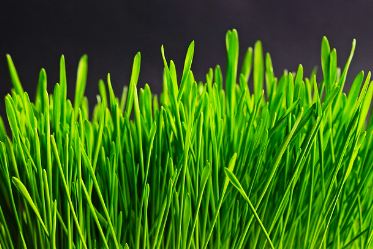
Guide students through this experiment to teach them about how the agriculture industry can be affected by light.
Learn More: Ecosystem for Kids
11. Cow Sim
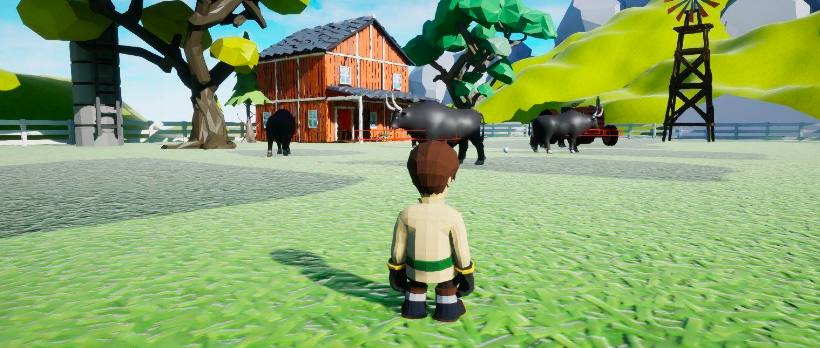
Looking for fun games for animal science? In Cow Sim there is a virtual farm for students to tend to. It is not always easy to find games students enjoy, but this game is similar to the Sims so it’s sure to be a hit!
Learn More: Texas A&M Today
12. Chicken Life Cycle
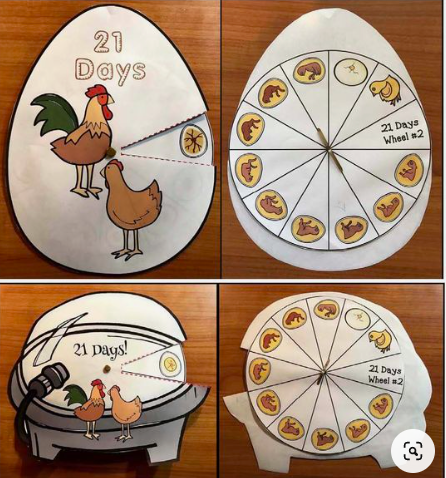
Agriculture students need to learn all about the different animals, which includes reproduction. Use this activity to teach about the incubation of a chicken and what each day looks like.
Learn More: Teach With Me
13. Soil Erosion
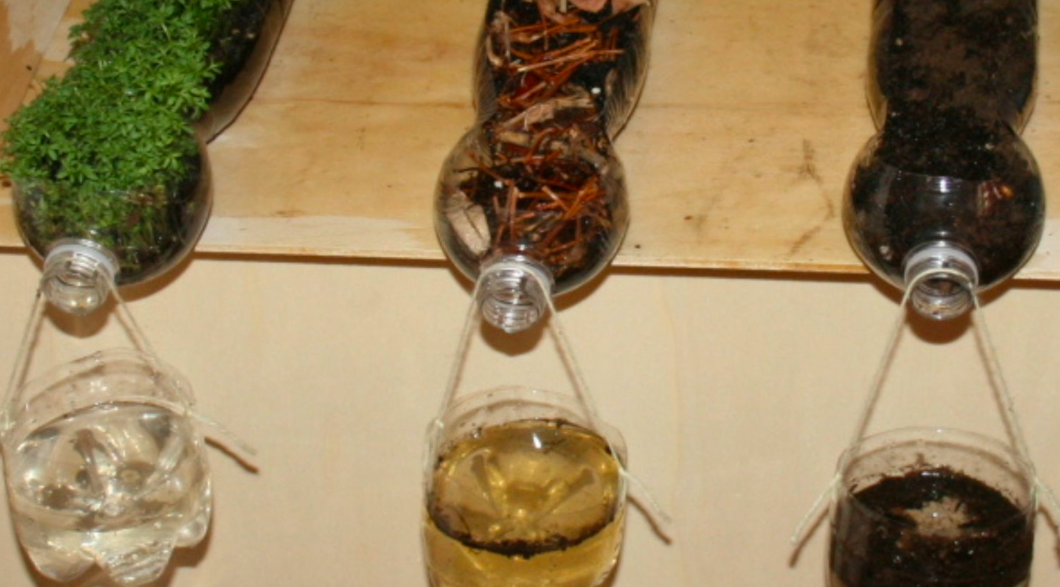
A soil science resource that is fun and teaches about erosion. Students will experiment with different types of soil by pouring water and see which have poor drainage or lead to erosion.
Learn More: Orlando Science Center
14. Science and Our Food Supply
This collection of videos is a super way to teach your kiddies more about the chain of agriculture. The RealFarmED channel has a whole bunch of amazing, informative videos on all aspects of farming from the growing process, the technology involved, and even how to become a farmer!
Learn More: YouTube
15. Exploring Careers Jigsaw

Agricultural educators want students to know their options! Have students use computers to explore employment in agriculture or animal science careers. Do a jigsaw for each category so students can share with their peers about the many types of jobs!
Learn More: AG Careers
16. World Food Crisis Activity

This is an agriculture worksheet activity packet where students try to solve the world food crisis that is predicted to occur in a few decades. It is not a classic agriculture lesson, but it focuses on students using critical thinking skills and also includes animal science terms.
17. Farm to Fork Game
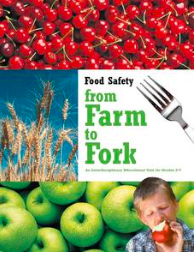
Food safety is important to any agriculture program. Students will play a board game about food safety where they will learn about facts and opinions, as well as the causes and effects of food safety. After they will write an essay on what they have learned.
Learn More: Lesson Planet
18. 4H Animal Science
In this choice activity, students get to choose what animal science content they want to learn about – goats bred for clothing, dairy cattle showmanship, and more. Through articles and videos, they learn about an animal and then answer a set of online questions.
Learn More: 4-H Animal Science Resource Blog
19. Impacts of Agriculture

In this activity, they will design houses for students and trace all the products back to agriculture. They will look at how what they use daily is impacted by it. The lesson follows national learning standards.

20. Current Events in Agriculture
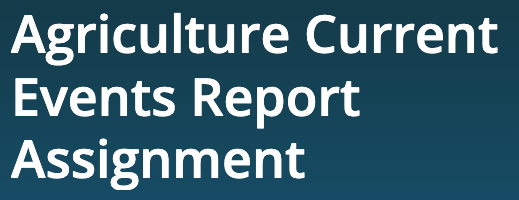
As an agriculture teacher, it is important students are well-informed. Just like in any other field, you must keep up with current events. For this activity, students will choose different current events to write a short report on.
Learn More: Yumpu
- The Agriculture Dictionary
- Agriculture & Nature
- Business & Investment
- Farm Animals
- How To Start
- Innovation & Technology
- Pest Control
- Uncategorized
Agriculture Project Topics | 100 Project Ideas
Are you a student passionate about agriculture and seeking compelling project topics to work on? Look no further! In this article, we will explore a diverse range of agriculture project topics that promise both academic enrichment and practical insights. From sustainable farming practices to innovative technologies shaping the future of agriculture, we’ve got you covered.
Embarking on an agriculture project can be a rewarding experience, providing students with the opportunity to apply theoretical knowledge to real-world challenges. Whether you are majoring in agronomy, agricultural economics, or agribusiness, these project topics are designed to ignite your curiosity and fuel your academic journey.
List of 100 agriculture project topics
We compiled a list of 100 new agriculture project topics you can work on, check them out
- Sustainable Crop Rotation Strategies for Enhanced Soil Health
- Impact of Climate Change on Crop Yields: A Regional Analysis
- Precision Agriculture: Integrating Technology for Farm Management
- Analyzing the Economics of Organic Farming Practices
- Hydroponics vs. Traditional Soil Cultivation: A Comparative Study
- The Role of Biotechnology in Crop Improvement
- Assessing the Effectiveness of Drip Irrigation Systems
- Exploring Vertical Farming as a Solution to Urban Food Security
- Evaluating the Impact of Pesticides on Soil Microbial Diversity
- Adoption of Smart Farming Technologies in Developing Countries
- Sustainable Livestock Farming Practices: A Case Study
- The Economics of Beekeeping for Pollination Services
- Agroforestry Systems: Balancing Agriculture and Conservation
- Analyzing the Role of Women in Agriculture: A Global Perspective
- The Use of Drones in Monitoring Crop Health
- Enhancing Water Use Efficiency in Agriculture
- Evaluating the Potential of Permaculture in Sustainable Agriculture
- Genetically Modified Crops: Benefits and Controversies
- Impact of Land Fragmentation on Agricultural Productivity
- Exploring Aquaponics: Integrating Fish Farming and Crop Cultivation
- Assessing the Social and Economic Impacts of Farmer Cooperatives
- The Role of Agricultural Extension Services in Rural Development
- Utilizing Big Data Analytics for Crop Yield Prediction
- Analyzing the Nutritional Content of Indigenous Crops
- Comparative Analysis of Different Soil Conservation Techniques
- The Future of Agriculture: Trends and Innovations
- Investigating the Impact of Global Trade Policies on Agriculture
- Organic vs. Conventional Farming: A Consumer Preference Study
- Assessing the Viability of Rooftop Farming in Urban Areas
- The Role of Agrochemicals in Modern Agriculture
- Impact of Cover Crops on Weed Suppression and Soil Health
- The Influence of Crop Diversification on Pest Control
- Analyzing the Role of Mycorrhizal Fungi in Enhancing Plant Growth
- Comparative Study of Different Irrigation Techniques in Arid Regions
- Investigating the Potential of Edible Insects as a Sustainable Protein Source
- The Effectiveness of Biological Pest Control Methods in Greenhouse Farming
- Assessing the Ecological Footprint of Livestock Farming Practices
- Examining the Social Dynamics of Farmers’ Markets in Urban Areas
- Exploring the Impact of Agricultural Practices on Biodiversity
- The Use of Blockchain Technology in Supply Chain Management for Agricultural Products
- Analyzing the Impact of COVID-19 on Global Food Supply Chains
- Sustainable Management of Agricultural Residue: A Case Study
- The Adoption of Climate-Smart Agriculture Practices in Developing Countries
- Evaluating the Role of Agroecology in Resilient Food Systems
- The Socioeconomic Impacts of Land Degradation on Rural Communities
- Investigating the Use of CRISPR Technology in Crop Improvement
- Analyzing the Factors Influencing Farmers’ Adoption of Precision Livestock Farming
- The Impact of Agricultural Policies on Smallholder Farmers
- Exploring the Potential of In Vitro Meat Production
- The Role of Artificial Intelligence in Farm Management Decision-Making
- Assessing the Nutritional Quality of Fortified Crops in Addressing Micronutrient Deficiencies
- Comparative Study of Different Fertilization Methods on Crop Productivity
- Investigating the Relationship Between Soil Microbiota and Plant Health
- The Role of Agricultural Cooperatives in Empowering Women Farmers
- Evaluating the Environmental Impact of Genetically Modified Organisms (GMOs)
- Analysis of Food Waste in the Agricultural Supply Chain
- Exploring the Feasibility of Rooftop Aquaculture in Urban Settings
- Assessing the Impact of Land Use Change on Ecosystem Services
- The Use of Remote Sensing in Monitoring Rangeland Health
- Comparative Analysis of Traditional and Modern Rice Cultivation Practices
- Examining the Role of Agri-Tourism in Rural Economic Development
- Analyzing the Impact of Water Scarcity on Agricultural Productivity
- The Role of Agro-Entrepreneurship in Sustainable Agriculture
- Investigating the Potential of Perennial Crops in Carbon Sequestration
- Comparative Study of Different Soil Amendments for Crop Growth
- Assessing the Socioeconomic Factors Affecting Farmers’ Adoption of Conservation Agriculture
- Exploring the Potential of Algae Farming for Sustainable Biofuel Production
- The Impact of Urbanization on Farmland Conversion and Agricultural Sustainability
- Analyzing the Adoption of Smart Irrigation Systems in Precision Agriculture
- Investigating the Use of Nanotechnology in Agriculture for Enhanced Crop Yield
- Assessing the Impact of Land Tenure Systems on Agricultural Development
- The Role of Agro-Meteorological Information in Crop Planning
- Exploring the Potential of Vertical Hydroponic Farming in Urban Spaces
- Analyzing the Impact of Livestock Grazing on Grassland Ecosystems
- Investigating the Use of Indigenous Knowledge in Sustainable Agriculture
- Assessing the Effectiveness of Agricultural Extension Programs in Rural Development
- The Role of Conservation Agriculture in Mitigating Soil Erosion
- Exploring the Impact of Trade Policies on Global Food Security
- Analyzing the Use of CRISPR Technology in Livestock Breeding
- The Effect of Soil Health on Crop Nutrient Content
- Investigating the Role of Agroforestry in Carbon Sequestration
- The Impact of Water Management Practices on Rice Cultivation
- Analyzing the Adoption of Climate-Resilient Crop Varieties
- The Use of Unmanned Aerial Vehicles (UAVs) in Precision Agriculture
- Investigating the Impact of Agrochemical Runoff on Water Quality
- Assessing the Economic Viability of Small-Scale Organic Farming
- Exploring the Potential of Insect Farming for Animal Feed
- The Role of Social Media in Agricultural Knowledge Dissemination
- Analyzing the Impact of Monoculture on Crop Disease Resistance
- The Effect of Temperature Extremes on Crop Yield Variability
- Investigating the Role of Agro-Processing in Adding Value to Agricultural Products
- Assessing the Impact of Urban Agriculture on Local Food Systems
- The Use of Biochar as a Soil Amendment for Sustainable Agriculture
- Analyzing the Impact of Agricultural Practices on Water Conservation
- Exploring the Adoption of Mobile Technology in Agricultural Extension Services
- The Role of Agri-Insurance in Mitigating Risks for Farmers
- Assessing the Impact of Livestock Waste Management Practices
- Investigating the Use of CRISPR Technology in Disease-Resistant Crops
- Analyzing the Potential of Recycled Water in Agricultural Irrigation
- The Role of Farmer Field Schools in Promoting Sustainable Agriculture
These diverse project topics aim to cater to students with varied interests within the field of agriculture, ensuring an engaging and intellectually stimulating experience. Whether you are fascinated by sustainable practices, cutting-edge technologies, or the socioeconomic aspects of agriculture, there’s a project topic here for you.
Leave a Reply Cancel reply
Your email address will not be published. Required fields are marked *
Save my name, email, and website in this browser for the next time I comment.
Notify me of follow-up comments by email.
Notify me of new posts by email.
Related News
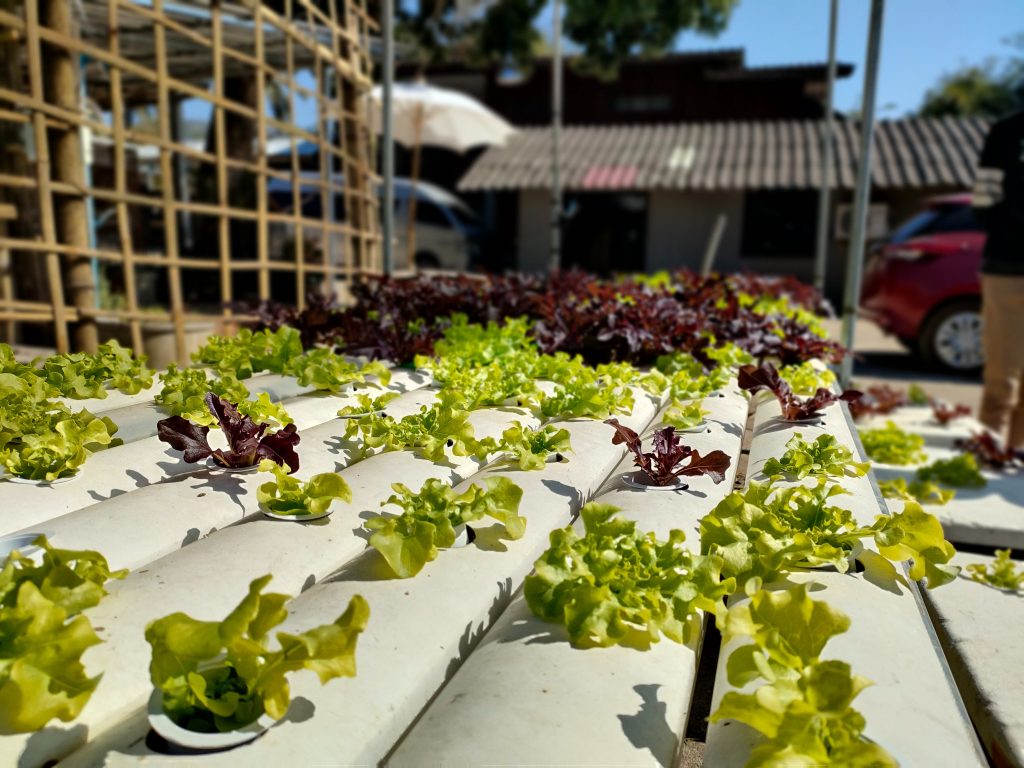
How to Make Nutrient Solution for Hydroponics
Msavi vegetation index | application in eosda crop monitoring.
Essay on Agriculture for Students and Children
500+ words essay on agriculture.
Agriculture is one of the major sectors of the Indian economy. It is present in the country for thousands of years. Over the years it has developed and the use of new technologies and equipment replaced almost all the traditional methods of farming. Besides, in India, there are still some small farmers that use the old traditional methods of agriculture because they lack the resources to use modern methods. Furthermore, this is the only sector that contributed to the growth of not only itself but also of the other sector of the country.

Growth and Development of the Agriculture Sector
India largely depends on the agriculture sector. Besides, agriculture is not just a mean of livelihood but a way of living life in India. Moreover, the government is continuously making efforts to develop this sector as the whole nation depends on it for food.
For thousands of years, we are practicing agriculture but still, it remained underdeveloped for a long time. Moreover, after independence, we use to import food grains from other countries to fulfill our demand. But, after the green revolution, we become self-sufficient and started exporting our surplus to other countries.
Besides, these earlier we use to depend completely on monsoon for the cultivation of food grains but now we have constructed dams, canals, tube-wells, and pump-sets. Also, we now have a better variety of fertilizers, pesticides, and seeds, which help us to grow more food in comparison to what we produce during old times.
With the advancement of technology, advanced equipment, better irrigation facility and the specialized knowledge of agriculture started improving.
Furthermore, our agriculture sector has grown stronger than many countries and we are the largest exporter of many food grains.
Get the huge list of more than 500 Essay Topics and Ideas
Significance of Agriculture
It is not wrong to say that the food we eat is the gift of agriculture activities and Indian farmers who work their sweat to provide us this food.
In addition, the agricultural sector is one of the major contributors to Gross Domestic Product (GDP) and national income of the country.
Also, it requires a large labor force and employees around 80% of the total employed people. The agriculture sector not only employees directly but also indirectly.
Moreover, agriculture forms around 70% of our total exports. The main export items are tea, cotton, textiles, tobacco, sugar, jute products, spices, rice, and many other items.
Negative Impacts of Agriculture
Although agriculture is very beneficial for the economy and the people there are some negative impacts too. These impacts are harmful to both environments as the people involved in this sector.
Deforestation is the first negative impact of agriculture as many forests have been cut downed to turn them into agricultural land. Also, the use of river water for irrigation causes many small rivers and ponds to dry off which disturb the natural habitat.
Moreover, most of the chemical fertilizers and pesticides contaminate the land as well as water bodies nearby. Ultimately it leads to topsoil depletion and contamination of groundwater.
In conclusion, Agriculture has given so much to society. But it has its own pros and cons that we can’t overlook. Furthermore, the government is doing his every bit to help in the growth and development of agriculture; still, it needs to do something for the negative impacts of agriculture. To save the environment and the people involved in it.
FAQs about Essay on Agriculture
Q.1 Name the four types of agriculture? A.1 The four types of agriculture are nomadic herding, shifting cultivation, commercial plantation, and intensive subsistence farming.
Q.2 What are the components of the agriculture revolution? A.2 The agriculture revolution has five components namely, machinery, land under cultivation, fertilizers, and pesticides, irrigation, and high-yielding variety of seeds.
Customize your course in 30 seconds
Which class are you in.

- Travelling Essay
- Picnic Essay
- Our Country Essay
- My Parents Essay
- Essay on Favourite Personality
- Essay on Memorable Day of My Life
- Essay on Knowledge is Power
- Essay on Gurpurab
- Essay on My Favourite Season
- Essay on Types of Sports
Leave a Reply Cancel reply
Your email address will not be published. Required fields are marked *
Download the App

Agruculture Lore
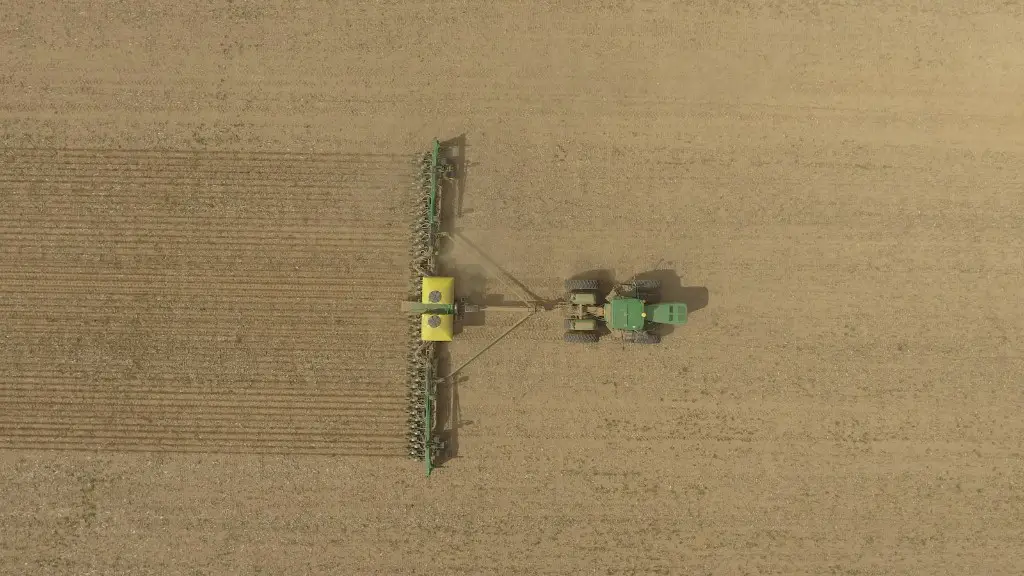
How to write agriculture report?
If you want to learn how to write an agriculture report, there are a few things you will need to know. First, you will need to understand the different types of reports that are available. There are many different types of reports, including crop reports, soil reports, and water reports. You will also need to know how to format your report so that it is easy to read and understand.
The steps for writing an agriculture report are as follows:
1. Choose a topic related to agriculture. 2. Research the chosen topic thoroughly. 3. Write a report outline. 4. Write a draft of the agriculture report. 5. Edit and revise the agriculture report. 6. Publish the agriculture report.
How do you write a research report for agriculture?
Before you start writing your agriculture research paper, it is important to consider a few points that will make your paper more valuable. First, organize your notes and develop a draft outline of your paper. This will help you identify the main ideas and points that you want to include in your paper. Next, choose your sources carefully and cite them properly in your draft. This will ensure that your paper is well-researched and that your sources are properly credited. Finally, proofread your paper carefully before submitting it for evaluation. By taking these simple steps, you can ensure that your agriculture research paper is of the highest quality and that it will be well-received by your audience.
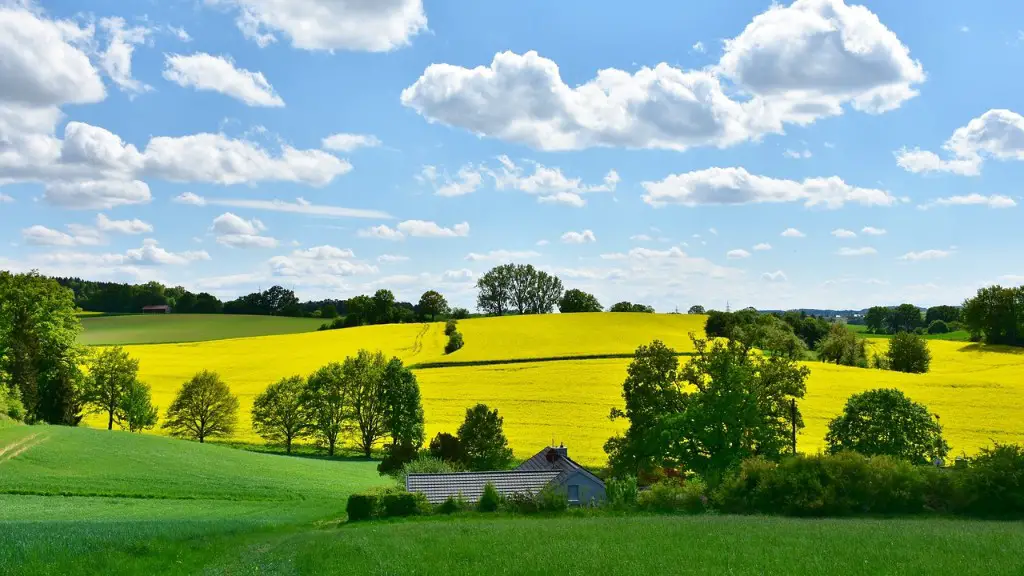
Hello, my name is _______ and I am a ______. I am interested in ______ and I have a plan to ______. I believe that this plan will ______ and I am confident that I can execute it successfully. Thank you for your time.
What do you mean by reporting in agriculture
Crop reporting is an important way to keep track of the progress of crops as they grow. By regularly monitoring and reporting on the status of crops, farmers can identify problems early and take steps to correct them. Crop reports can also be used to compare the performance of different varieties of crops and to track changes in yield over time.
1. Do your research on potential grant opportunities. Look for government and private grants that may be available to farmers.
2. Start small and early. It is often easier to obtain smaller grants in the beginning. As your farm grows, you can seek out larger grants.
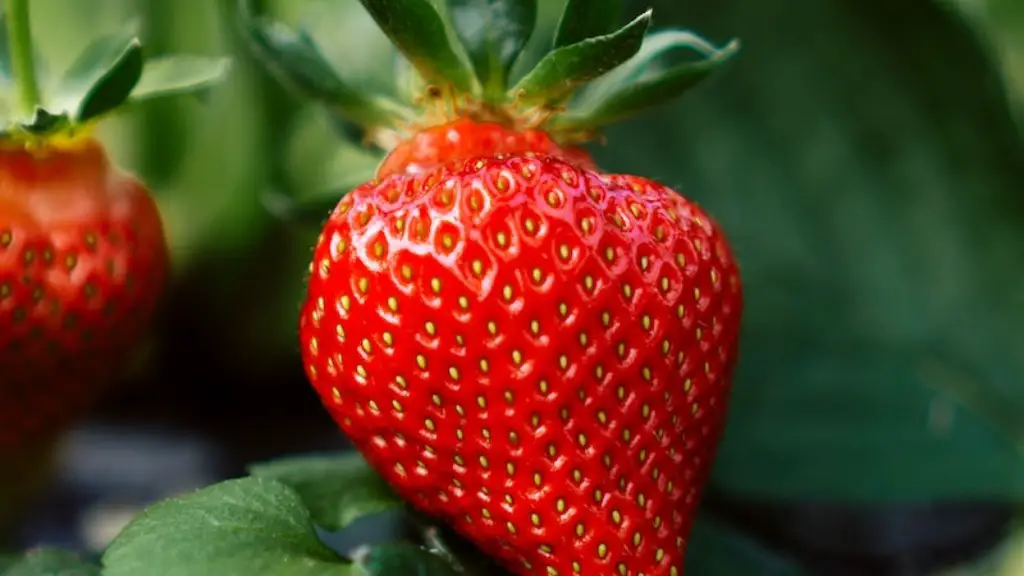
3. Tell a story. When writing a grant proposal, be sure to tell a compelling story about your farm and why it deserves funding.
4. Create a timeline. Include a detailed timeline of your project in your proposal. This will show grantors that you have a well-thought-out plan.
5. Seek out examples of previously funded projects. Use these as a guide when creating your own proposal.
6. Create an outline. Organize your thoughts and materials before beginning to write the actual proposal.
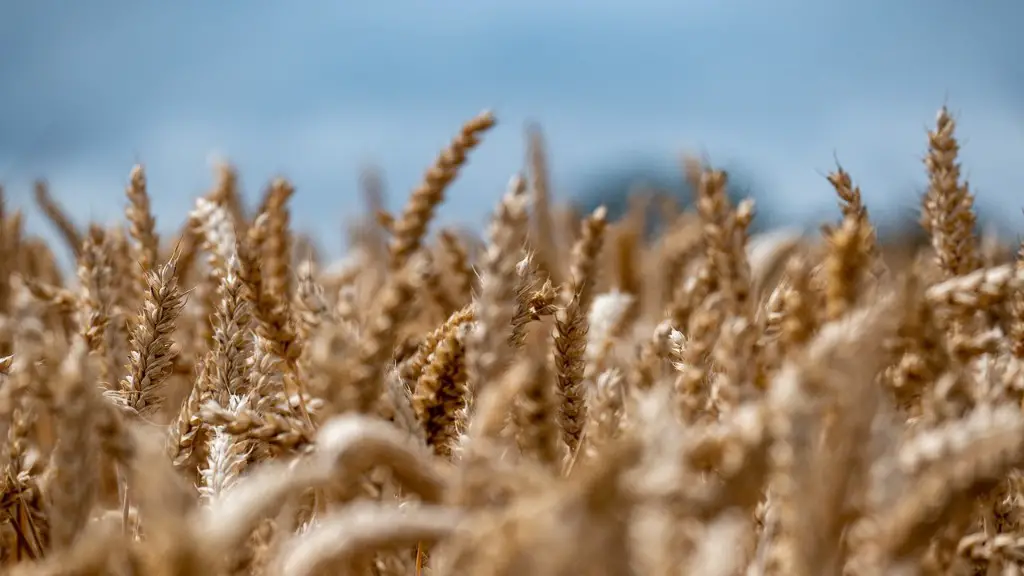
7. Clearly identify the project need. Be sure to explain in detail why the funding is needed and how it will be used.
8. Make your outcomes measurable. Include specific goals and metrics in your proposal so that grantors can see the impact of their funding.
What are the 5 steps in writing a research report?
1. Read the brief/terms of reference carefully. The brief should tell you what the report is for, who the audience is, and what the report should include.
2. Plan each section. Decide what information you need to include in each section, and what order it should go in.
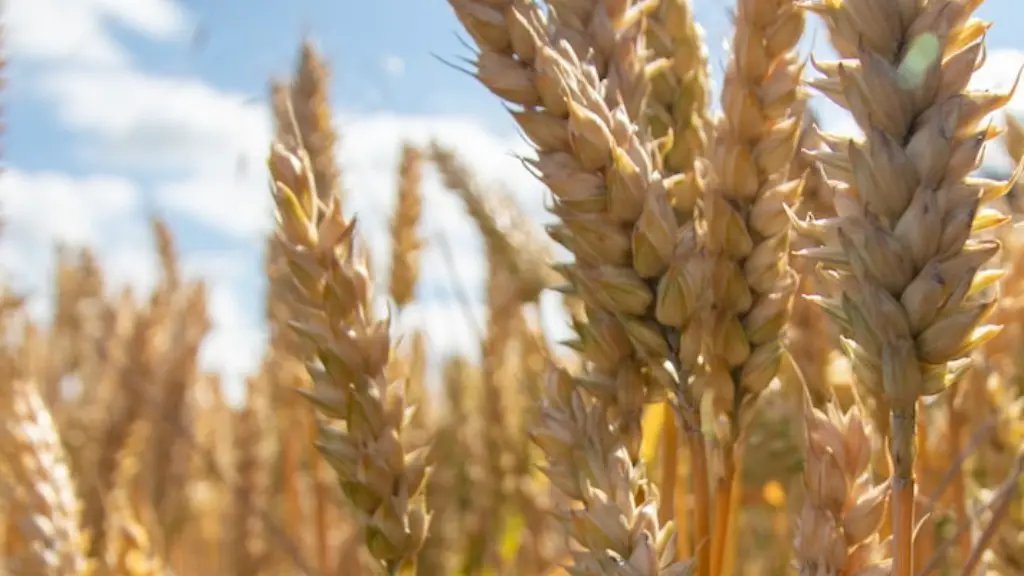
3. Relate findings to background research. Make sure your findings are relevant to the topic of the report.
4. Put yourself in the position of the reader. Write the report so that it is easy to understand, even for someone who is not an expert on the topic.
5. Edit ruthlessly and proofread. Make sure your report is free of errors, and that it flows well.
A research paper in APA style typically contains a Title page, Abstract, Introduction, Methods, Results, Discussion, and References sections. The Title page contains the title of the paper, the author’s name, and the institutional affiliation. The Abstract provides a brief summary of the paper. The Introduction discusses the research question and the literature review. The Methods section describes the research design and methodology. The Results section presents the data and the statistical analyses. The Discussion section discusses the implications of the results. The References section lists the sources cited in the paper.
What is agriculture short paragraph?
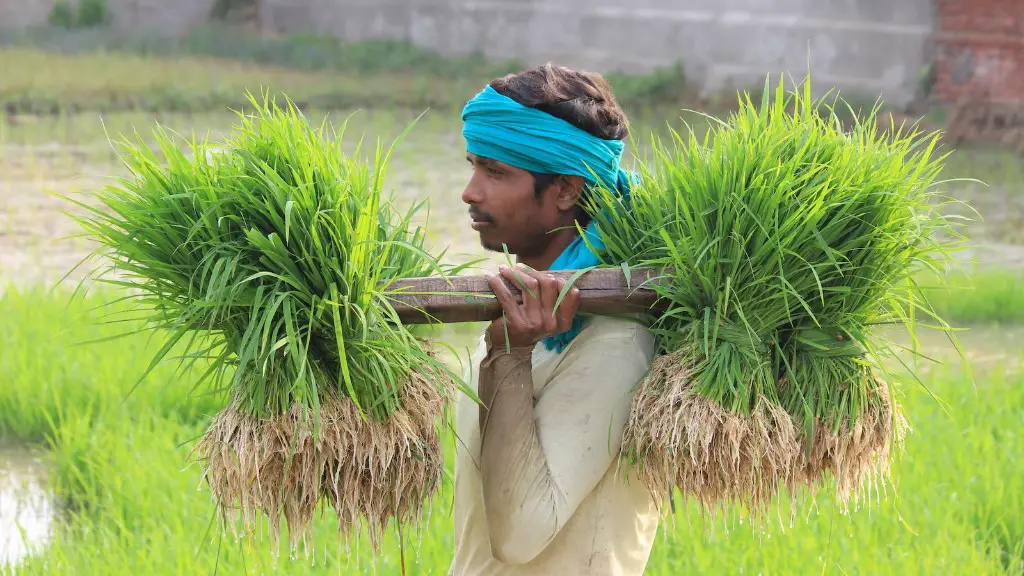
Agriculture is extremely important for the world, as it provides most of the food and fabrics that we use. It is a complex art and science that involves the cultivation of the soil, growing of crops, and raising of livestock. Agriculture also includes the preparation of plant and animal products for people to use, as well as their distribution to markets.
Agriculture is the main occupation in India and two-third of population is dependent on agriculture directly or indirectly. It is not merely a source of livelihood but a way of life. It is the main source of food, fodder and fuel. It is the basic foundation of economic development.
What are the examples of agricultural project
1. Macadamias Biofuel: A project to research the feasibility of using macadamia nuts as a biofuel source.
2. Fruit Livestock: A project to research the feasibility of using fruit as a livestock feed source.
3. Conservation Agriculture: A project to research ways to improve the efficiency of agricultural production while conserving natural resources.
4. Wine: A project to research the production of wine and its impact on the environment.
5. Renewable Energy: A project to research the use of renewable energy sources in agriculture.
6. Wheat: A project to research the production of wheat and its impact on the environment.
7. Soil Conservation: A project to research ways to improve soil conservation in agriculture.
8. Pest Management: A project to research ways to improve pest management in agriculture.
9. Water Management: A project to research ways to improve water management in agriculture.
10. Food Security: A project to research ways to improve food security in agriculture.
1. Choose a topic based on the assignment.
Before you start writing, you need to pick the topic of your report.
2. Conduct research.
3. Write a thesis statement.
4. Prepare an outline.
5. Write a rough draft.
6. Revise and edit your report.
What is report format?
A report format typically contains the following sections: -Executive summary -Table of Contents -Introduction -Body
The executive summary provides a brief overview of the main points in the report. The table of contents lists the topics covered in the report. The introduction provides background information about the subject of the report. The body contains the main information in the report.
It is important to keep track of your progress and results on a regular basis. Doing so will help you identify areas of improvement and allow you to make necessary adjustments to your plans.
Reporting also helps keep everyone on the same page and accountable. Depending on the organization, different levels of reporting may be necessary. For example, weekly activity reports may be sent to a supervisor, monthly result reports may be shared with the team, and quarterly ROI reports may be presented at meetings.
Whatever the case, it is important to be clear, concise, and consistent with your reporting. Doing so will ensure that everyone is on the same page and that progress is being made.
What are the 7 steps of agriculture
The 7 steps involved in agricultural practices are:
1. Ploughing 2. Sowing 3. Adding nutrients 4. Irrigation 5. Protecting plants 6. Harvesting 7. Storage.
Each of these steps is important in order to ensure a successful crop. Ploughing helps to turn over the soil and prepare it for planting. Sowing the seeds ensures that there is a good supply of plants. Adding nutrients helps the plants to grow healthy and strong. Irrigation ensures that the plants have enough water. Protecting plants helps to keep them from being damage or killed by pests. Harvesting ensures that the plants are collected and stored properly.
In order to claim income from agriculture as exempt from tax under Sec 2 of the Income Tax Act, the land must be used for agricultural purposes as defined in the case of CIT v Raja Benoy Kumar Roy. Agricultural purposes include activities such as tilling the land, planting, harvesting, and grazing. The land must be actually used for these activities in order to qualify for the exemption.
How do I write a grant for a beginner?
A grant proposal is a document that request grant funding from a government agency or foundation. It outlines the purpose of the project, the need for the funding, how the funds will be used, and the expected outcomes. The grant proposal should be clear, concise, and well-written in order to make a convincing case for funding.
The cover letter is the first thing that the grant review committee will read, so it is important to make a good impression. The cover letter should briefly introduce the organization and the proposal. It should also state the amount of funding requested and the project timeline.
The executive summary is a brief overview of the proposal. It should state the problem that the project is addressing, the goals and objectives, the project design, the evaluation plan, and the sustainability plan.
The problem statement should be clear and specific. It should describe the problem that the project is addressing and why it is important.
The goals and objectives should be realistic and achievable. They should be specific and measurable. The objectives should be aligned with the problem statement.
The project design should describe the methods and strategies that will be used to achieve the project objectives. It should be clear and concise.
The evaluation section should describe how the
The 5 Cs of report writing are important to follow in order to produce reports that will be helpful to your team in any situation. Clear reports are those that are free of any ambiguity or confusion. Concise reports are those that are brief and to the point. Complete reports include all relevant information. Consistent reports follow a set format and style. Courteous reports are respectful and professional.
What are the 4 elements to consider in making a report
A research report should always include an introduction that briefly describe the context and background to the research. The introduction should also describe the change, problem or issue to be reported on, and define the specific objectives and purpose of the report. The introduction should also indicate the overall answer to the problem explored in the report.
Reporting is a critical business function that allows organizations to track progress, identify areas of opportunity, and make necessary improvements. An effective report must include five key elements: an executive summary, introduction, discussion, conclusion, and recommendations.
An executive summary is a concise overview of the key points of the report. It should be clear and concise, and should highlight the main takeaways from the report.
The introduction should provide background information on the issue being addressed in the report. It should explain why the issue is important, and provide an overview of the contents of the report.
The discussion section should present the findings of the report in detail. It should discuss the implications of the findings, and provide recommendations for further action.
The conclusion should summarize the main points of the report, and reiterate the importance of the issue being addressed.
Recommendations should be clear and specific, and should provide a roadmap for further action. They should be tailored to the needs of the organization, and should be based on the findings of the report.
There is no one definitive answer to this question. However, some tips on writing an agriculture report include focusing on a specific area of agriculture, such as livestock or crop production, and tailoring the report to your audience. Other important considerations include ensuring the accuracy of your information and using clear and concise language.
There are a few key elements to writing a successful agriculture report. First, it is important to choose a catchy and interesting title that accurately reflects the content of the report. Second, the report should be well-researched and provide accurate information about the chosen topic. Third, the report should be clearly written and organized in a way that is easy for the reader to follow. Finally, the report should conclude with a summary of the main points covered and any recommendations for further study.

Claudia Adams
Claudia is passionate about agriculture and plants. She has dedicated her life to understanding the science behind growing plants, and she is always looking for new ways to make the process more efficient. She loves experimenting with different techniques and technologies, and she is always striving to make the world a better place through agriculture.
Leave a Comment Cancel reply
Sample Agricultural Economics Assignment
Note: This assignment was designed for a 400-level class.
Good analytical writing is a rigorous and difficult task. It involves a process of editing and rewriting, and it is common to do a half dozen or more drafts. Because of the difficulty of analytical writing and the need for drafting, we will be completing the assignment in four stages. A draft of each of the sections described below is due when we finish the class unit related to that topic (see due dates on syllabus). I will read the drafts of each section and provide comments; these drafts will not be graded but failure to pass in a complete version of a section will result in a deduction in your final paper grade. Because of the time both you and I are investing in the project, it will constitute one-half of your semester grade.
Content, Concepts and Substance
- Population—Developing countries have undergone large changes in population. Explain the dynamic nature of this continuing change in your country or region and the forces underlying the changes. Better papers will go beyond description and analyze the situation at hand. That is, go behind the numbers to explain what is happening in your country with respect to the underlying population dynamics: structure of growth, population momentum, rural/urban migration, age structure of population, unanticipated populations shocks, etc. DUE: WEEK 4.
- Papers will focus on the peoples and policies related to population, food, and the environment of your chosen country. As well as exploring each of these subsets, papers need to highlight the interrelations among them. These interrelations should form part of your revision focus for the final draft. Important concepts relevant to the papers will be covered in class; therefore, your research should be focused on the collection of information on your chosen country or region to substantiate your themes. Specifically, the paper needs to address the following questions.
- Food—What is the nature of food consumption in your country or region? Is the average daily consumption below recommended levels? Is food consumption increasing with economic growth? What is the income elasticity of demand? Use Engel's law to discuss this behavior. Is production able to stay abreast with demand given these trends? What is the nature of agricultural production: traditional agriculture or green revolution technology? Is the trend in food production towards self-sufficiency? If not, can comparative advantage explain this? Does the country import or export food? Is the politico-economic regime supportive of a progressive agricultural sector? DUE: WEEK 8.
- Environment—This is the third issue to be covered in class. It is crucial to show in your paper the environmental impact of agricultural production techniques as well as any direct impacts from population changes. This is especially true in countries that have evolved from traditional agriculture to green revolution techniques in the wake of population pressures. While there are private benefits to increased production, the use of petroleum-based inputs leads to environmental and human health related social costs which are exacerbated by poorly defined property rights. Use the concepts of technological externalities, assimilative capacity, property rights, etc. to explain the nature of this situation in your country or region. What other environmental problems are evident? Discuss the problems and methods for economically measuring environmental degradation. DUE: WEEK 12.
- Final Draft—The final draft of the project should consider the economic situation of agriculture in your specified country or region from the three perspectives outlined above. Key to such an analysis are the interrelationships of the three perspectives. How does each factor contribute to an overall analysis of the successes and problems in agricultural policy and production of your chosen country or region? The paper may conclude with recommendations, but, at the very least, it should provide a clear summary statement about the challenges facing your country or region. DUE: WEEK15.
- IAS Preparation
- UPSC Preparation Strategy
- Wto Agreement On Agriculture
WTO Agreement on Agriculture (AoA)
The Agreement on Agriculture (AoA) is a World Trade Organisation treaty that focuses on reducing the agricultural support and subsidies given to domestic producers by countries. It is one of the most contentious agreements within the WTO . In this article, you can read all about the WTO Agreement on Agriculture, its impact on India and also how developed countries have been taking advantage of the WTO regime in their favour. This is an important topic for the UPSC exam economy and agriculture segments.
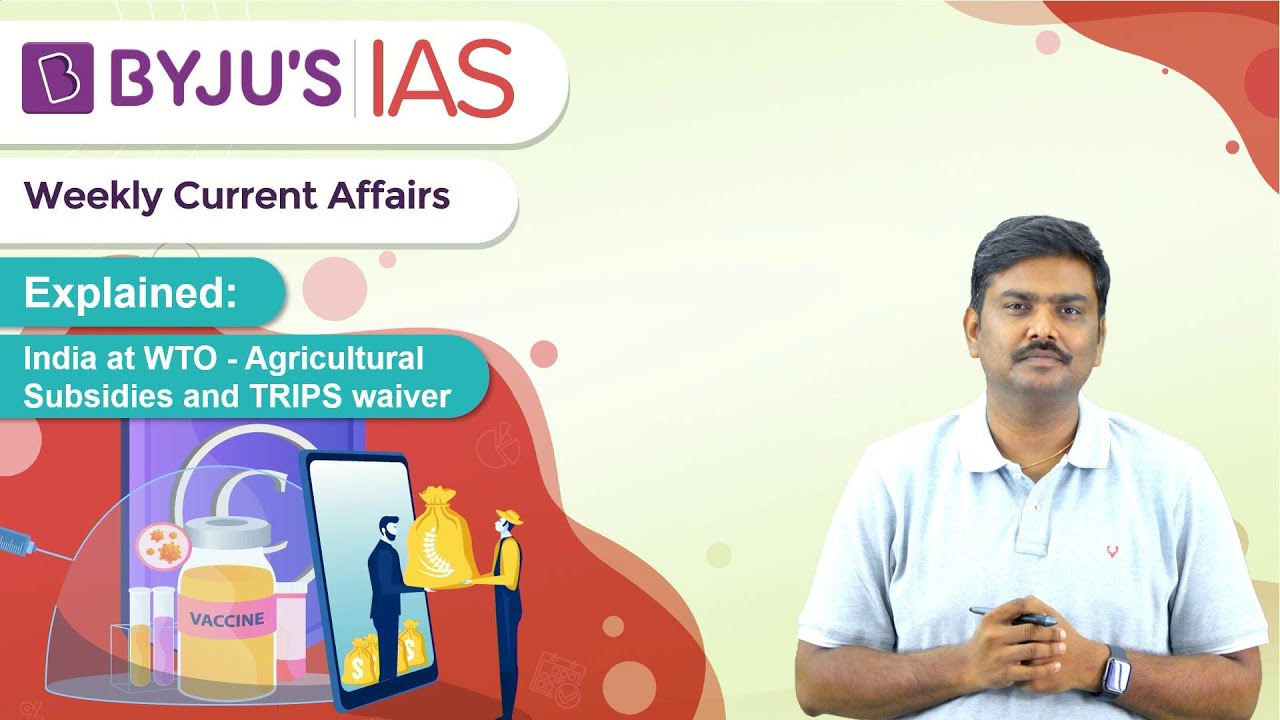
Agreement on Agriculture
The Agreement on Agriculture (AoA) is a WTO treaty that was negotiated during the Uruguay Round of the General Agreement on Tariffs and Trade (GATT) and formally ratified in 1994 at Marrakesh, Morocco. The AoA came into effect in 1995.
- According to its provisions, developing countries were to complete their reduction commitments by 2000 and developing countries by 2004.
- The Least Developed Countries were not required to make any reductions.
- The Agreement covers products that are normally considered part of agriculture but excludes forestry and fishery products and also rubber, sisal, jute, coir and abaca.
- The focus of the AoA is the elimination of what are called “trade distorting” agricultural subsidies.
- According to the WTO, the overall aim of the Agreement is “to establish a fairer trading system that will increase market access and improve the livelihoods of farmers around the world.”
Features of WTO Agreement on Agriculture
The provisions of the WTO Agreement on Agriculture relate mainly to three broad categories of agriculture and trade policy, which are discussed below.
- Tariffication – implies all non-tariff barriers to be abolished and converted to tariffs. Non-tariff barriers include variable levies, minimum import prices, quotas, state trading measures, discretionary licensing, etc.
- Tariff reduction – Developing countries were obligated to reduce tariffs by 24% in 10 years.
- Access opportunities – Minimum access equal to 3% of domestic consumption in 1986-88 will have to be established for the year 1995 rising to 5% at the end of the implementation period.
- This head includes improving access to markets by removing trade barriers.
- This concerns the policy support and subsidies given by countries to enhance domestic production. WTO has classified agricultural subsidies and policies into different boxes, which are explained in a section below in detail.
- Here, there are provisions related to member countries’ commitments to reduce export subsidies.
- Developed countries are mandated to reduce their export subsidy volume by 21% and expenditure by 36% in 6 years, in equal installment (from 1986 –1990 levels).
- Developing countries need to reduce export subsidy volume by 14% and expenditure by 24% over ten years in equal installments.
Read about various WTO Agreements in the link.
WTO Agricultural Subsidies Boxes
The domestic support subsidies are categorized into various boxes in the WTO. The various boxes and their implications are discussed in this section.
The images below describe the subsidies classified according to the WTO Boxes.

Special and Differential Treatment (SDT)
Other than the three boxes, there is also another box of subsidies that confer special and differential treatment for developing countries and LDCs. This is also called the Development Box.
- Under this, countries are permitted untargeted subsidized food distribution to satisfy the requirements of the urban and rural poor.
- They may also give investment subsidies that are usually available to agriculture and agricultural input subsidies available to low income and resource-poor farmers.
- These include purchases for and sales from food security stocks at administered prices provided that the subsidy to producers is included in calculation of the Aggregate Measure of Support (AMS).
- Under SDT, developed countries may be given an exemption from implementing their reduction commitments at the AoA for ten years.
- As of now, LDCs are not required to make any kind of reduction commitment at the AoA.
- Developed countries are not provided with the SDT.
Agreement on Agriculture Criticism
Opponents of the Agreement say that it reduces tariff protection for small farmers, which is a major income source in developing countries, while at the same time, it allows rich countries to continue subsidising their farmers.
- Through clever classification of the subsidies into trade-distorting (amber box) and non-trade distorting (green box), developed countries manage to heavily subsidize agriculture in their countries while targeting developing countries including India of indulging in trade-distorting practices.
- A collaborative India-China study has shown that developed countries such as the United States, Canada and countries of the EU give out several times higher subsidies to their farmers than the rest of the world.
- Developed countries continue to provide trade-distorting subsidies without attracting any penalties under the WTO.
- Under the Amber Box, developed countries were given the choice of either accepting a product-specific ceiling of 5 per cent, or an overall cap. By choosing the latter option, most developed countries have been able to better target sops for specific crops.
- Even with low subsidies, India should be worried of breaching the 10% limit on subsidies.
- The developed countries constantly take developing countries to task on policies like the Minimum Support Price (MSP) while they continue to support their farmers and also make barriers for trade and market entry.
- The WTO’s push towards globalisation threatens three dimensions of a sustainable and equitable agricultural policy, namely, ecological security, livelihood security and food security. Globalisation will adversely affect producers with low or no capital and investment.
WTO Agreement on Agriculture (AoA):- Download PDF Here
Leave a Comment Cancel reply
Your Mobile number and Email id will not be published. Required fields are marked *
Request OTP on Voice Call
Post My Comment
IAS 2024 - Your dream can come true!
Download the ultimate guide to upsc cse preparation.
- Share Share
Register with BYJU'S & Download Free PDFs
Register with byju's & watch live videos.

- Alumni Home
Class Notes
James Chism (’23 agricultural business) accepted a new role as crop protection territory manager at Corteva Agriscience.
Dan VanderPloeg (’22 MS seed technology and business) joined University of Wyoming Extension as an agriculture and natural resources educator in Washakie County.
Emily Joenks (’23 agricultural and life sciences education) was featured in a N’West Iowa REVIEW article about her experience as a new agricultural education teacher and FFA adviser.
Cale Pellett (’22 agricultural business, economics) began a new role as a customer sales representative for AgriVision Equipment Group.
Karl Kerns (’14 animal science) received the Mission Award for Research from Iowa State University’s Gamma Sigma Delta chapter.
Kaitlin Metzger (’10 agricultural business) was part of the Seed Science Center team that received a 2023 CYtation Team Award from Iowa State University’s Professional and Scientific Council.
Adam Thoms (’06 horticulture) received the Mission Award for Extension from Iowa State University’s Gamma Sigma Delta chapter.
Derrick Mayfield (’09 biology, ’13 MS plant pathology) was part of the Seed Science Center team that received a 2023 CYtation Team Award from Iowa State University’s Professional and Scientific Council.
Kellie Blair (’06 forestry, agronomy) was part of a panel of guest speakers in the 100th episode of the Water Table Podcast, talking about the past, present and future of agricultural water management.
Jacob Handsaker (’04 agricultural studies) was part of a panel of guest speakers in the 100th episode of the Water Table Podcast, talking about the past, present and future of agricultural water management.
Elisabeth Huff Lonergan (’91 MS animal science, ’95 PhD animal science, biology) has been named an American Association for the Advancement of Science Fellow.
Dawn Miller (’95 MS agricultural education and studies) received a 2023 CYtation Award from Iowa State University’s Professional and Scientific Council.
Amy L. Baker (’97 MS animal science, genetics, ’02 DVM veterinary medicine, ’04 PhD immunobiology) was named the Distinguished Senior Research Scientist of the Year by the USDA Agricultural Research Service.
Mitchell Hoyer (’80 animal science, ’81 agricultural and life sciences education) has been named director and state program leader for 4-H Youth Development with Iowa State University Extension and Outreach.
Barbara Clawson (’83 agricultural and life sciences education, ’88 MS) received the Mission Award for Teaching from Iowa State University’s Gamma Sigma Delta chapter.
Steven Lonergan (’88 animal science, ’91 MS) received the Mission Award for International Agriculture from Iowa State University’s Gamma Sigma Delta chapter.
Patrick McGonegle (’83 animal science) received the Alumni Award of Merit from Iowa State University’s Gamma Sigma Delta chapter.
Brian E. Scheffler (’86 MS agronomy, ’89 PhD) was named one of four 2024 Area Senior Research Scientists of the Year by the USDA Agricultural Research Service.
Curtis P. Van Tassell (’89 MS animal science) was named one of four 2024 Area Senior Research Scientists of the Year by the USDA Agricultural Research Service.
Charles Block (’79 MS plant pathology, ’96 PhD) was part of the Seed Science Center team that received a 2023 CYtation Team Award from Iowa State University’s Professional and Scientific Council.
Jacob Berkes (’14 agricultural systems technology, industrial technology) was promoted to manufacturing and quality engineer for LeMar Industries, a subsidiary of Brock Grain Systems.
Rebecca (Haugland) Johnson (’16 agricultural and life sciences education) has been promoted to senior director of marketing at GlobalVetLink.
Madison Durflinger (’19 biology, animal science, ’23 DVM veterinary medicine) was featured in an Iowa Farmer Today article about her work as a large animal veterinarian.
Saxon Ryan (’12 industrial technology, agricultural systems technology, ’16 MS industrial and agricultural technology, ’20 PhD) received the Early Achievement in Teaching Award from Iowa State University’s College of Agriculture and Life Sciences.
Stephanie Hansen (’13 animal science) received the Outstanding Achievement in Advising Award from Iowa State University’s College of Agriculture and Life Sciences.
Heidi Ackerman (’13 agronomy, ’16 MS soil science, agricultural and life sciences education) received the Early Achievement in Advising Award from Iowa State University’s College of Agriculture and Life Sciences.
Nav Ghimire (’10 PhD agricultural and life sciences education) has been appointed as associate dean, Agriculture and Natural Resources focus of Nebraska Extension at the University of Nebraska-Lincoln’s Institute of Agriculture and Natural Resources.
Kelly Norris (’08 horticulture, ’11 MS) earned multiple awards, including the Governor’s Trophy for most innovative design, at the Philadelphia Flower Show for his creation, “A Beautiful Disturbance” that revitalized an abandoned lot into a lively ecosystem.
Dan Bolin (’06 dairy science) and his wife, Lynn, of New Day Dairy were honored with the Wergin Good Farm Neighbor Award, sponsored by the Coalition to Support Iowa’s Farmers.
Brian Gelder (’00 agronomy, agricultural engineering, ’07 PhD soil science, agricultural engineering) received the Outstanding Achievement in Research Award from Iowa State University’s College of Agriculture and Life Sciences.
Adam Sisson (’06 agronomy, environmental studies, ’09 MS sustainable agriculture) received the Creative Impact Award from Iowa State University’s College of Agriculture and Life Sciences.
Rodger Main (’91 agricultural studies, ’96 DVM) was named the 2024 Outstanding Swine Academic of the Year by the American Association of Swine Veterinarians.
Ed Anderson (’84 agricultural biochemistry) was presented the Tom Oswald Legacy Award by the United Soybean Board.
April Hemmes (’82 animal science) was named a 2024 Iowa Master Farmer.
Jim Nau (’82 horticulture) was posthumously awarded the Liberty Hyde Bailey Award by the American Horticultural Society as part of the 2024 Great American Gardeners Awards.
Barb Clawson (’83 agricultural and life sciences education, ’88 MS) received the Service and Dedication Award from Iowa State University’s College of Agriculture and Life Sciences.
Neil McCoy (’71 farm operation) and wife, Becky, were named 2024 Iowa Master Farmers.
February 2024
Lindsay Peters (’23 MS animal physiology) has been hired as an extension specialist for the Iowa Pork Industry Center.
Kara Jeffrey (’23 animal ecology, biology) joined Reef Relief as a spring 2024 conservation intern.
Karen Van De Walle (’20 MS agricultural and life sciences education) was featured in a story published by Waverly Newspapers about the increasing number of female agricultural education teachers and FFA advisors.
Matthew Schroeder (’20 agricultural and life sciences education, ’21 MS) was named one of seven finalists for the Golden Owl Award.
Casey Allen (’22 agricultural and life sciences education) was named one of seven finalists for the Golden Owl Award.
Cody Smith (’18 agricultural and life sciences education) was featured in an Indiana University article about his efforts to tackle environmental challenges.
Carlton Ness (’12 agricultural and life sciences education, ’20 MS) was named one of seven finalists for the Golden Owl Award.
Andy Schroeder (’11 agricultural studies, agronomy) was named the state winner of the Hog Wild Award, presented by the Iowa Pork Producers Association.
Erin Brenneman (’04 animal science) has been appointed to the National Pork Producers Delegate Body.
Jen Sorenson (’01 animal science) has been appointed to the National Pork Producers Delegate Body.
Patrice Bailey (’01 MS agricultural education and studies) was featured in a Farm Progress article about the unique perspective he brings to the Minnesota Department of Agriculture.
Ashley Wolfe (’06 MS agricultural and life sciences education) was named one of seven finalists for the Golden Owl Award.
John Daniels (’07 agricultural and life sciences education) was named one of seven finalists for the Golden Owl Award.
Amber Greiman (’03 agricultural and life sciences education, ’17 MS) was named one of seven finalists for the Golden Owl Award.
David Hill (’96 agricultural and life sciences education) will begin as Waverly-Shell Rock Community School District’s superintendent July 1, 2024.
Doug Houser (’93 agricultural systems technology) accepted a role as a digital ag extension specialist with Iowa State University Extension and Outreach.
Ryan Pudenz (’96 animal science) has been appointed to the National Pork Producers Delegate Body.
Susan Kaaria (’90 MS economics) was featured in a University World News Africa Edition article about her work as director of the African Women in Agricultural Research and Development and efforts to support and encourage women involved in agricultural research.
John Zimmerman (’95 animal science) was elected to serve as the 2024 National Turkey Federation chairman.
Kevin Cooper (’83 agricultural and life sciences education) received the Golden Apple Award for his work as Nevada High School’s agriculture teacher and FFA advisor.
Gregg Hora (’82 farm operation) has been appointed to the National Pork Producers Delegate Body.
David Moody (’85 animal science) has been appointed to the National Pork Producers Delegate Body.
Dean Frazer (’87 agricultural studies) has been appointed to the National Pork Producers Delegate Body.
Steven Kerns (’81 animal science) has been appointed to the National Pork Producers Delegate Body.
Todd E. Wilson (’86 animal science) has been appointed to the National Pork Producers Delegate Body.
Barb Lemmer (’82 agricultural and life sciences education, ’04 MS) was named one of seven finalists for the Golden Owl Award.
Dennis Liljedahl (’75 animal science) has been appointed to the National Pork Producers Delegate Body.
Jamie Schmidt (’78 CT farm operation) has been appointed to the National Pork Producers Delegate Body.
Mark Meirick (’79 agricultural business) has been appointed to the National Pork Producers Delegate Body.
January 2024
Taylor Lekin (’23 agricultural and rural policy studies) accepted a role as a marketing and program development coordinator for American Feed Industry Association.
Jenna Vander Heiden (’23 agricultural business) started a new position as a marketing rep – ISG Test Farm at John Deere.
Grace (Hansen) McAfee (’20 agricultural and life sciences education) has been hired as the new community wellness coordinator for Cass County, Iowa.
Madelynn (Cornell) Wuestenberg (’23 MS agricultural meteorology) has been appointed the agricultural climatology specialist for Iowa State University Extension and Outreach.
Will Taylor (’21 MS animal science) has joined Iowa State University’s Department of Animal Science as an assistant teaching professor and the livestock judging team coach.
Harrison Furlow (’21 animal science) has accepted a role as manager of state pork industry relations with the National Pork Producers Council.
Stephanie Carlson (’13 animal science) started a new position as assistant vice president of state and national relations for the National Pork Producers Council.
Preston Poots-Jacobsen (’14 agricultural and life sciences education) has joined Corteva Agriscience as marketing communications manager.
Jared Morse (’14 agricultural business) was promoted to senior credit officer at CoBank.
Emily (Flory) Carolan (’14 agricultural business) has taken on a new role as home designer for Kelly Building Systems.
Haley (Hillyard) Kerr (’17 animal science) joined Sustainable Environmental Consultants as a livestock specialist.
Bailey Morrell (’14 agricultural studies) joined the National Pork Board Team where she will take on the channel market development manager role.
Stuart McCulloh (’13 agricultural and life sciences education) began a new position as crop adjuster at AgriSompo North America.
Michael Dolch (’13 agricultural and life sciences education) joined Ag Processing Inc. as director of government affairs.
Adam Gittins (’03 agricultural business) purchased High Tech Solutions for Agriculture (HTS Ag) in Harlan, Iowa, and will assume the role of president of the precision agriculture technology dealer.
Mark Licht (’00 agronomy, agricultural extension education, ’03 MS soil science, ’15 PhD crop production and physiology) has been named the new associate chair for Extension and Outreach in Iowa State University’s Department of Agronomy.
Lorilee Schultz (’07 agricultural business, economics) has joined the Dairy Girl Network board of directors.
Devin Mogler (’08 agricultural business, economics) started a new role as senior vice president of corporate and investor relations at Green Plains Inc.
Eric Boeck (’93 animal science, dairy science) was featured in a Q&A published by Successful Farming about his role as regional director, North America Seeds for Syngenta.
Suzanne Shirbroun (’91 agronomy, pest management) was featured in an Iowa Soybean Association article about her thoughts as president of the ISA board, looking ahead to the association’s 60th year.
Zita Quade (’85 agricultural journalism) joined the Iowa Water Center in November as a Research Administrator.
Jeff Kaisand (’89 animal science, ’93 DVM) was named a 2023 Honorary Master Pork Producer by the Iowa Pork Producers Association.
Wayne Fredericks (’73 animal science) was presented the Legacy of Leadership Award from the Iowa Soybean Association.
Marv Holtkamp (’63 farm operation) and his wife, Sue, were named to the Iowa Pork Producers Association’s 82nd class of Master Pork Producers.
December 2023
Mickayla Jordan (’23 agricultural communication) received the Rookie of the Year award from the Iowa Soybean Association.
Ben Covington (’12 agricultural systems technology, ’13 MS industrial and agricultural technology) received the Programming Innovation Award from Iowa State University Extension and Outreach Agriculture and Natural Resources.
Levi Powell (’12 agricultural systems technology, ’14 MS industrial and agricultural technology) received the Programming Innovation Award from Iowa State University Extension and Outreach Agriculture and Natural Resources.
Sarah Tweeten (’15 agricultural and life sciences education) was named the winner of the Iowa Farm Bureau’s Discussion Meet.
Matthew Burt (’12 agricultural business) received one of Iowa Farm Bureau’s 2023 Young Farmer Leadership Awards.
Elizabeth Burns-Thompson (’11 agricultural business, international agriculture) accepted a position as vice president of external affairs at Landus.
Patrice Bailey (’01 MS agricultural education and studies) was named to the Twin Cities Business 100 for 2024.
Kellie Blair (’06 forestry, agronomy) was one of four women who received the Women Impacting Agriculture Award from Iowa State University Extension and Outreach.
Tom Grau (’72 animal science) has accepted the role of member development and support specialist with Storm Lake United.
November 2023
Cara Haden (’10 animal science, ’14 DVM) received the Outstanding Young Alumni Award from Iowa State University’s College of Veterinary Medicine.
Zack Peppmeier (’18 animal science) was featured by Farm Journal’s Pork Business as part of its Up & Coming Leaders feature.
Curtis Behrens (’11 animal ecology) has been appointed as the new director of Tama County Conservation.
Hayley Williams (’17 food science) accepted a new position as a food scientist at Cargill.
Carter Oliver (’15 forestry, animal ecology) received the County Professional Excellence in ANR Programming Award from Iowa State University Extension and Outreach Agriculture and Natural Resources.
Bryan Whaley (’11 MS agricultural and life sciences education) has been named the new chief executive officer of the Iowa Cattlemen’s Association.
Larry Sadler (’02 animal science, agricultural business, ’09 MS animal physiology, ’13 PhD biomedical sciences) received the Lorraine J. Hoffman Graduate Alumni Award from Iowa State University’s College of Veterinary Medicine.
Brittini Brown (’09 MS industrial and agricultural technology) was appointed associate vice president for student engagement and dean of students for Johns Hopkins University in Baltimore, Maryland.
Earl McAlexander (’80 agricultural and life sciences education, ’97 MS) was part of a team that received the Outstanding Team Award from Iowa State University Extension and Outreach.
Peter Hoffman (’67 MS animal science, ’69 PhD) was inducted into Conrad Weiser High School’s Distinguished Alumni Hall of Fame.
October 2023
Harley Butler (’22 environmental science) graduated from the Land Stewardship Leadership Academy offered by ISU Extension and Outreach.
Zach Nie (’22 forestry) graduated from the Land Stewardship Leadership Academy offered by ISU Extension and Outreach.
Benjamin Porepp (’20 agronomy) graduated from the Land Stewardship Leadership Academy offered by ISU Extension and Outreach.
Joy Van Wyngarden (’20 agricultural and life sciences education) graduated from the Land Stewardship Leadership Academy offered by ISU Extension and Outreach.
Austin Waters (’22 forestry, animal ecology) graduated from the Land Stewardship Leadership Academy offered by ISU Extension and Outreach.
Miranda Baer (’13 animal ecology) accepted a new role as senior academic advisor at Purdue University’s School of Mechanical Engineering.
Amanda Cole (’19 environmental science) graduated from the Land Stewardship Leadership Academy offered by ISU Extension and Outreach.
Brittany Decker (’18 agronomy) graduated from the Land Stewardship Leadership Academy offered by ISU Extension and Outreach.
Ben Zelle (’14 agricultural business, management information systems) has been promoted to tactical sales manager of the Eastern Region USA for John Deere.
Nate Dobbels (’12 agricultural and life sciences education, international agriculture) received the W. Robert Parks Honors Commendation award from the Iowa State University Honors Program.
Justin Bisinger (’09 animal science, ’14 MS environmental science, nutritional sciences) graduated from the Land Stewardship Leadership Academy offered by ISU Extension and Outreach.
Carolyn Ihde (’00 horticulture, ‘15 MS agricultural and life sciences education) is the new Small Ruminant Outreach Specialist for Iowa State University Extension and Outreach and the University of Wisconsin-Madison Division of Extension.
Antoine Alston (’00 PhD agricultural education and studies) was featured alongside his daughter, Kayla, in a Triad City Beat article about their family’s multigenerational involvement in agriculture.
Nicholas Paulson (’02 agricultural systems technology, ’04 MS economics, ’07 PhD economics) received the Hobart R. and Marian Gardner Hinderliter Endowed Professor in Farm Management at the University of Illinois Urbana-Champaign College of Agricultural, Consumer and Environmental Sciences.
Dave Drennan (’75 agricultural journalism) received the 2023 Thomas Jefferson Leadership and Service Award from the Missouri chapter of the National Association of Benefits and Insurance Professionals.
Fred Sick (’65 animal science, ’74 DVM veterinary medicine) was named the 2023 Iowa Veterinarian of the Year by the Iowa Veterinary Medical Association.
September 2023
Grace Howe (’22 agricultural and rural policy studies) began a new role as director of communications and policy for the Wisconsin Agri-Business Association.
Emily Campbell (’20 agricultural studies) accepted a role as an agribusiness instructor at Des Moines Area Community College’s Ankeny campus.
Carlie Miller (’23 animal science) was featured in an article in the Waverly Newspapers about her hopes of being selected in a national contest to sing the National Anthem at the National Finals Rodeo.
Jenna Vander Heiden (’23 agricultural business) has accepted a position with John Deere’s marketing development program.
Marjorie Hanneman (’21 agronomy, genetics) was recently named a 2023-2026 FFAR Fellow.
Madeline Schultz (’03 agricultural business, economics) received a Distinguished Service Award from the National Association of County Agricultural Agents.
Ben Slinger (’08 industrial technology) and his family were honored with a 2023 Iowa State Fair Way We Live Award.
Brian Swart (’01 agronomy, ’04 MS crop production and physiology) was appointed to the position of president-elect on the Iowa Soybean Association’s executive committee.
Martha Smith (’04 agricultural business, international agriculture) received the 2023 Emerging Iowa Leader Award from Iowa State University’s College of Agriculture and Life Sciences.
Suzanne Shirbroun (’91 agronomy, pest management) was elected to serve as president of the Iowa Soybean Association.
Brent Renner (’98 agricultural studies) was appointed to the at-large position on the Iowa Soybean Association’s executive committee.
Ted Funk (’72 outdoor recreation services) was named one of the 2023 Distinguished Alumni honorees by the Osage Education Foundation.
August 2023
Alyssa Rosenbaum (’22 culinary food science, horticulture) received the Center for Produce Safety’s 2023 Professional Development Program Award.
Matie George (’12 animal science, ’14 MS) started a new role as a formulation and pricing specialist for Ridley Feed Ingredients.
Sam Showalter (’14 agricultural studies) has joined the Iowa Soybean Association board of directors and will serve a three-year term.
Justin Bahr (’16 agricultural business, international agriculture) received the Early Career Award from the American Society of Farm Managers & Rural Appraisers.
Tyler Walters (’14 animal ecology) has been named the manager of Lake Wapello State Park near Drakesville, Iowa.
Joshua Henik (’10 agronomy, ’12 MS crop production and physiology) received an Iowa Farm Environmental Leader Award at the Iowa State Fair.
Mitchell Hora (’17 agricultural systems technology, agronomy) received an Iowa Farm Environmental Leader Award at the Iowa State Fair.
Corey Goodhue (’07 industrial technology) will serve a three-year term on the Iowa Soybean Association board of directors.
Tahnee Szymanski (’00 animal science) has been selected to serve as the new Montana state veterinarian.
Zack Smith (’02 agronomy) received an Iowa Farm Environmental Leader Award at the Iowa State Fair.
Lacey Luense (’07 MS genetics) was featured in an AgriLife Today article about the research she’s conducting as an assistant professor in the Texas A&M College of Agriculture and Life Sciences Department of Animal Science to determine how male behaviors and the environment affect offspring in livestock.
Sharon Chism (’91 agricultural business) has been elected to serve a three-year term on the Iowa Soybean Association board of directors.
Perry Corey (’91 agricultural studies) and his wife, Stacy, received an Iowa Farm Environmental Leader Award at the Iowa State Fair.
Mike Paustian (’98 microbiology) received an Iowa Farm Environmental Leader Award at the Iowa State Fair.
Jarrett Smith (’97 agricultural business) received an Iowa Farm Environmental Leader Award at the Iowa State Fair.
Todd Thilges (’94 agricultural studies) and his wife, Angie, received an Iowa Farm Environmental Leader Award at the Iowa State Fair.
Dave Schlitter (’80 agricultural business) has accepted a position as retail sales supervisor at Woodford Lumber and Home in Clear Lake, Iowa.
Brian Hora (’85 farm operation) received an Iowa Farm Environmental Leader Award at the Iowa State Fair.
Lori Ryner (’86 agricultural business) and her husband, Dan, received an Iowa Farm Environmental Leader Award at the Iowa State Fair.
Paul Kassel (’78 horticulture, agronomy, ’81 MS crop production and physiology) will serve a three-year term on the Iowa Soybean Association board of directors.
Randy Petersen (’70 AA technical agriculture) received an Iowa Farm Environmental Leader Award at the Iowa State Fair.
Leland Searle (’72 agricultural journalism) received an Iowa Farm Environmental Leader Award at the Iowa State Fair.
Ron Stutsman (’63 agricultural business) was named an Iowan of the Day for the 2023 Iowa State Fair by the Iowa State Fair Blue Ribbon Foundation and Cookies Food Products.
Rachel Blum (’22 agricultural studies) is serving in a new role as a summer assistant with the Greene County Extension Office.
Taylor Kluesner (’21 agricultural and life sciences education) started as the Dubuque County Outreach coordinator for Iowa Farm Bureau.
Zach Petersen (’22 agricultural systems technology) was featured in a Cyclones.com story about he and his family’s involvement on Iowa State’s football team.
Cassie Jones (’12 PhD nutritional sciences) is the recipient of the 2023 Mark and Eva Gardiner Innovation and Excellence Faculty Award.
Jenna Gehring (’16 agricultural and life sciences education, public service and administration in agriculture) began a new position as industry marketing leader/northwest region at FORVIS.
Andrew Lauver (’12 agricultural studies) joined Farm Journal as director of business development, trust in food.
Macy Marek (’19 agricultural and life sciences education) started a new position as Pioneer corn product marketing manager at Corteva Agriscience.
Garett Onstot (’19 global resource systems, animal science) began a new role as regional sales representative at Anatomage Inc.
Rachel Owen (’13 global resource systems, agronomy) joined Land Core as a senior policy advisor.
Tory Mogler (’14 agricultural business, economics) was promoted to toll risk manager at Cargill.
Mitchell Hora (’17 agricultural systems technology, agronomy) was featured in an Iowa Farmer Today article about the business he started.
Sarah May (’18 animal science) was named 2023 Coach of the Year by the Madison City Chess League.
Courtney Knupp (’07 agricultural business) has been elected to serve as a member of the Iowa State University Alumni Association Board of Directors.
Martha Smith (’04 agricultural business, international agriculture) has been elected as an officer of the ISU Alumni Association Board of Directors.
Melea Licht (’00 public service and administration in agriculture, ’05 MS agricultural and life sciences education) began a new position as assistant director of communications at Iowa State University’s Parks Library.
Pierce Paul (’03 PhD plant pathology) has been appointed professor and chair of The Ohio State University College of Food, Agricultural and Environmental Sciences Department of Plant Pathology.
Laura Greiner (’96 animal science, ’99 MS, ’01 PhD animal nutrition) has been named director of Iowa State University’s Iowa Pork Industry Center.
Wendy Wintersteen (’88 PhD entomology) will serve as secretary/treasurer on the Big 12 Board of Directors.
Marshall Martin (’66 agricultural business) was named Indiana’s Honorary Master Farmer recipient, an award presented by Indiana Prairie Farmer and the Purdue College of Agriculture.
Mikayla Spinler (’21 animal science) received the 2023 Larry Corah Graduate Student Award from the Kansas State University Department of Animal Sciences and Industry.
Megan Cady (’21 agricultural and life sciences education) has joined Iowa Corn as the new District 6 field manager in eastern Iowa.
Ross Cady (’21 international agriculture, agricultural business) is the new sales account manager at Distynct.
Nick Halbur (’21 agricultural studies) started a new position as account manager at Growers Edge.
Trentin Moeller (’22 agricultural business) accepted a new role as retail product agronomist at Brevant Seeds.
Zoey Dinkla (’20 agricultural studies) has been named the producer education director for the Iowa Pork Producers Association.
Mollee Patten (’21 agricultural studies) started a new position as business manager for Midwest Market Management, Inc.
Cassie Jones (’12 PhD nutritional sciences) was named an outstanding mentor to undergraduate researchers at Kansas State University.
Jonathan Campbell (’12 PhD meat science, food science and technology) has received the 2023 Distinguished Extension and Industry Service Award from the American Meat Science Association.
Mitchell Hora (’17 agricultural systems technology, agronomy) was featured in a Farm Journal AgWeb article about his business that has helped improve soil health conditions on his farm, as well as those of others’.
Erica Lain (’17 animal science) accepted a position as a sustainable systems agronomist at Bayer.
Colin Hurd (’13 agricultural studies) was featured in a story in the Iowa Stater magazine about his work using autonomous technology in agriculture.
Wesley Schweer (’13 animal science, ’15 MS, ’18 PhD) has joined Cargill Animal Nutrition as a swine nutritionist.
Christie Wiebbecke (’00 agronomy, ’11 PhD plant breeding) accepted a position with the Iowa Soybean Association as senior director of research.
Lesa Vold (’00 animal science) received an ACE Rising Star Award from the Association for Communication Excellence.
Larkin Powell (’92 MS animal ecology) has been named director of the School of Natural Resources at the University of Nebraska-Lincoln.
Jerry Chizek (’79 agricultural and life sciences education, ’83 MS) was featured in an article in The Messenger about his lifelong career as an educator.
Katherine Rasch (‘22 agricultural studies) started a new position as a customer support specialist at NEW Cooperative, Inc.
Hannah Spies (’21 agricultural business) has joined TELUS Agriculture and Consumer Goods as a member of its agribusiness marketing team.
Abbie Van Raden (’21 animal ecology) was hired as the new state technician for Keokuk County Soil and Water Conservation District/NRCS office in Sigourney, Iowa.
Riley Wilgenbusch (’20 global resource systems, agronomy) earned his master of science in public health degree in international health at Johns Hopkins Bloomberg School of Public Health.
Cynthia Farmer (’21 agriculture and society, dairy science) began a new position as farm policy associate at the Center for Rural Affairs.
Eric Jones (’15 agronomy, ’18 MS crop production and physiology) has been hired as the new weed management specialist for South Dakota State University Extension.
Angelica Van Goor (’16 PhD genetics) was presented the Alumni Award of Merit from Gamma Sigma Delta, the Iowa Chapter of the Honor Society of Agriculture.
Rachel Farr (’19 biology) was featured in an Oklahoma State University article about her journey to becoming a veterinarian in the Army Veterinary Corps.
Lindsay Stoaks (’13 MS agricultural and life sciences education) has been named interim president of Southwestern Community College.
Dan Schaben (’14 agricultural studies) began a new position as area business manager at AgriGold.
Matthew Burt (’12 agricultural business) was named one of the 2023 Young Farmer Leadership Award recipients by the Iowa Farm Bureau.
Heidi Ackerman (’13 agronomy, ’16 MS soil science, agricultural and life sciences education) received the Early Achievement in Learning Community Coordination award from Iowa State University’s Learning Communities.
Megyn Dirks (’19 agricultural and life sciences education) was recently promoted to social media manager for Woodruff.
Charlie Kreis (’14 agricultural business) started a new position as rail fleet analyst at Cargill.
Brian Castro (’14 nutritional science, global resource systems) earned his master’s in foreign service from Georgetown University.
Molly Severn (’14 agricultural and life sciences education, public service and administration in agriculture) has advanced to the role of deputy chief of staff in the Office of Governor Reynolds, State of Iowa.
Cheryl Morris (’02 MS animal science, animal nutrition) received the Mission Award for Research from Gamma Sigma Delta, the Iowa Chapter of the Honor Society of Agriculture.
Ben Drescher (’05 agricultural and life sciences education) was presented the Regents Award for Staff Excellence by the Iowa Board of Regents.
Eric Underbakke (’01 agricultural biochemistry) received the James Huntington Ellis Award for Excellence in Undergraduate Introductory Teaching from Iowa State University. He also was presented the Learning Communities Outstanding Innovations Award from Iowa State University’s Learning Communities.
Kirk Haaland (’06 industrial technology) was part of the CIRAS Manufacturing 4.0 Team that received the Award for Achievement in Economic Development in Iowa from Iowa State University.
Patrick Wall (’01 animal science, ’03 MS) was presented the Professional and Scientific Excellence Award from Iowa State University.
Steve Jonas (’01 horticulture) and Nicole Jonas (’02 horticulture) were featured in an Iowa State University Extension and Outreach article about their participation in Annie’s Project and how the program helped them grow their business.
Brent Hales (’00 PhD rural sociology) will become the new associate vice president for research and Cooperative Extension at the University of California Agriculture and Natural Resources.
Brittni Brown (’09 MS industrial and agricultural technology) was featured in a story on Iowa State University’s College of Engineering website.
Scott Smalley (’06 MS agricultural and life sciences education, ’11 PhD) was named the 2023 Distinguished Agriculture Teacher Educator by the American Association for Agricultural Education.
Amy Brandau (’00 agricultural business) received Learning Communities Outstanding Innovations Award from Iowa State University’s Learning Communities.
Justin Ewalt (’99 animal science) and his wife, Jamie, were featured in an Iowa Farmer Today article for their success in using social media to advertise their farm-based beef business in Tabor, Iowa.
Kyoungjin Yoon (’95 PhD microbiology, immunology and preventative medicine) received the Award for Achievement in Intellectual Property from Iowa State University.
Garland Dahlke (’94 MS animal science, ’97 PhD) was presented the Award for Outstanding Achievement in Extension or Professional Practice from Iowa State University.
Jim Jordahl (’82 farm operation, ’91 MS agronomy) received the Professional and Scientific Outstanding New Professional Award from Iowa State University.
Rich Wrage (’84 agricultural and life sciences education, ’98 MS) was presented the R.K. Bliss Extension Award from Iowa State University.
Kendall Lamkey (’85 PhD agronomy) received the Learning Communities Faculty Engagement Award from Iowa State University’s Learning Communities.
Douglas Ware (’75 MS animal science, ’76 PhD) was presented with the Distinguished Achievement in Agriculture Award from Gamma Sigma Delta, the Iowa Chapter of the Honor Society of Agriculture.
Russ Euken (’79 animal science, ’88 MAG professional agriculture) received the Award for Distinguished Service in Extension and Outreach from Iowa State University.
View Alumni Memoriams

- In Memoriam
Recent Stories // Online Extras
- Potatoes: One of COVID’s Hot Commodities
- March Madness with an Agronomic Twist
- Online Extras
- George Washington Carver Online Extras
- Online Extras – Fall 2018
- Online Extras – Spring 2018
- Online Extras – Fall 2017
- Online Extras – Spring 2017
- Online Extras – Fall 2016
Stories Home

Assignment Help on Agriculture

What is agriculture?
Agriculture is a great art and study of developing by using the soil. It incorporates the planning of plant and animal items for individuals to utilize and their appropriation to business markets. it gives the vast majority of the world’s food and textures. Cotton, fleece, and leather are largely agricultural items. Farming additionally gives wood to development and paper products. These items, just as the rural techniques utilized, may fluctuate starting with one part of the world then onto the next.
History of Agriculture
The historical backdrop of agriculture is the narrative of humanity’s turn of events and development of cycles for creating food, fibre, fuel, and different merchandise by the efficient raising of plants and creatures. Before the advancement of plant development, humans were hunters and finders. The information and ability of figuring out how to really focus on the dirt and development of plants progressed the advancement of human culture, permitting groups and clans to remain in one area many ages. Archaeological proof shows that such improvements happened at least 10,000 years prior.
Background of Agriculture
Agriculture, the development of food and merchandise through cultivating, produces by far most of the world’s food supply. It is thought to have been rehearsed irregularly for as far back as 13,000 years, and broadly settled for just 7,000 years. In the long perspective on mankind’s set of experiences, this is only an inevitable failure contrasted with the almost 200,000 years our ancestors spent assembling, chasing, and searching in nature. During its short history, farming has profoundly changed human social orders and powered a worldwide populace that has developed from 4 million to 7 billion since 10,000 BCE, is still growing.
Topical Types of Agriculture
- Roman agriculture
- Chinese agriculture
- Indian agriculture
- Mixed agriculture
- Vertical agriculture
- Shifting Agriculture
- Specialized agriculture
Top 30 Agriculture assignment topics
- 21st century agriculture trends
- Specialized Transformation in Agriculture
- Natural Farming and Organic Food
- Socialization of Technology in Agriculture
- Expansion in farming
- Enormous Population and Less Agriculture
- Sustainable Agriculture For food
- Homestead Power and Energy in Agriculture
- Recovery of Sodic Soils
- Horticulture and Farmers’ Expectations
- Removal of Waste Water Sludge
- Government Policies on Agriculture
- Farming and Growth of Economy
- Composts and Farm agribusiness
- Significance of Agriculture in Life
- Water is Heart of Agriculture
- Savvy Farming: The Future of Agriculture?
- Farm Bill: Boon or Bane for farmers!
- Is It Agriculture’s Time to Shine?
- Power Water Pumping System Using Wind Mill: Boon for Agriculture!
- Farm Bill: Impact on the eventual fate of cultivating
- Agriculture: Evolution or Devolution?
- New developments in agriculture!
- Agriculture: A Fertile Ground for Digitization
- Revolutionizing agriculture with biology
- Organic vs. Sustainable Agriculture
- Natural Farming Vs Commercial Farming
- Subsistence Farming Vs Factory Farming
- Climate Effect on agriculture Systems
- Impact of New Agriculture Techniques
- We deliver a high quality of work with a competitive edge because we believe in quality assurance and we offer qualitative work to customers.
- We work with a pool of qualified teams to deliver the best work and they are proficient enough to solve all kinds of business analytics projects assignments.
- Time plays a key role in one’s life, we deliver on specified ample time with perfect deadline constancy.
- We give attention to doing high research, writing, and presentation of plagiarism-free content with accurate data.
- Our prices are designed to meet every student’s budget and we won’t stop you from taking our services. Don’t worry about burning holes in your pockets.
- We support beyond the time and work round the clock without any restrictions & always on-line for clearing the doubts regarding the assignment help.
- We run services on simple processes to provide basic to advanced assignment help to students with a broader context.
- We strive to match the best global standard with top quality work within the deadline.
- We assist with all our assignments across the academic levels.
- We organize, simplify, and comprehend data thus helping students to pursue good grades.
Need help ? Contact All Assignment Support, Start chart Now ! We are Online.
Leave a Comment Cancel Reply
You must be logged in to post a comment.

Regional Planning Assignment Help

The Importance of Research Skills in Academic Writing

The Pros and Cons of Online Learning: What You Need to Know
All Assignment Support

- Assignment Writing
- Student Life
- Assignment Help
- Research Paper Help
ALL ASSIGNMENT SUPPORT
- Our Experts
- Privacy Policy
- Terms & Conditions
- Free Samples
- Premium Essays
- Editing Services Editing Proofreading Rewriting
- Extra Tools Essay Topic Generator Thesis Generator Citation Generator GPA Calculator Study Guides Donate Paper
- Essay Writing Help
- About Us About Us Testimonials FAQ
- Agriculture Assignments
- Samples List
An assignment examples on agriculture s is a prosaic composition of a small volume and free composition, expressing individual impressions and thoughts on a specific occasion or issue and obviously not claiming a definitive or exhaustive interpretation of the subject.
Some signs of agriculture s assignment:
- the presence of a specific topic or question. A work devoted to the analysis of a wide range of problems in biology, by definition, cannot be performed in the genre of agriculture s assignment topic.
- The assignment expresses individual impressions and thoughts on a specific occasion or issue, in this case, on agriculture s and does not knowingly pretend to a definitive or exhaustive interpretation of the subject.
- As a rule, an essay suggests a new, subjectively colored word about something, such a work may have a philosophical, historical, biographical, journalistic, literary, critical, popular scientific or purely fiction character.
- in the content of an assignment samples on agriculture s, first of all, the author’s personality is assessed - his worldview, thoughts and feelings.
The goal of an assignment in agriculture s is to develop such skills as independent creative thinking and writing out your own thoughts.
Writing an assignment is extremely useful, because it allows the author to learn to clearly and correctly formulate thoughts, structure information, use basic concepts, highlight causal relationships, illustrate experience with relevant examples, and substantiate his conclusions.
- Studentshare
Examples List on Agriculture Assignments
- TERMS & CONDITIONS
- PRIVACY POLICY
- COOKIES POLICY
Content Search
Consultancy assignment: exposure visit facilitation and management.
Terms of Reference (ToR)
Terms of Reference for Consultancy Assignment: Exposure visit facilitation and management
Under “Building the Palestinian Agricultural Insurance Systems and Services” Project”
Ref: 24/009/OPTI/JRM
- Palestinian Agricultural Sector
The relevance of agricultural insurance derives from the importance of the agricultural sector itself in social and economic development in Palestine. The country is rich in agricultural biodiversity, enjoys a variety of climatic and geographical variations that enable diversity in agricultural production, and benefits from its ability to keep abreast of agricultural technological development. The Israeli occupation, however, proliferates drivers and vulnerabilities, including the confiscation of land, fragmentation of Palestinian territory, control over water and resources, especially in Area C, limited access to international and national markets, and military and settler violence. Despite manifold Israeli restrictions on Palestinian access to resources, movement, and trade, which have led to an overall decline of the sector, agriculture remains an important source of food security, livelihoods, and export revenues. Although impacted by the global COVID-19 pandemic and operating under Israeli restrictions, which have resulted in continuous loss of land and water, the percentage contribution of agricultural activity value added of Gross Domestic Product (GDP) is estimated to reach 7.6% according to 2021 forecasts. Further, agriculture provided jobs for 6.2% of the employed in the third quarter of 2021 and a secondary source of income for many more households in the occupied Palestinian territory, where farming widely depends on family labour. Women play a critically important but often unrecognised role in the sector, supplying 87% of the labour input in livestock production and 54% in rain-fed crop production (Food and Agriculture Organisation, 2020).
However, agriculture's overall economic importance is broader than just the sector itself. It has forward and backward linkages with sectors such as industry, retail and wholesale trade, transport, tourism, and hospitality services, which rely on it as a source of inputs or as a market that absorbs their outputs.
Over and above its economic roles, agriculture is an intrinsic component of the Palestinian cultural and social fabric. It plays a crucial part in the national narrative and is privileged in literature, songs, and other artistic expressions. It has come to symbolize Palestinian resilience and perseverance in the face of ongoing land loss due to prolonged occupation and the expansion of Israeli settlements. Within the context of political volatility, one of the world’s fastest-growing populations, and increased climatic variability exacerbated by environmental degradation, the risks faced by farmers, producers, and other agricultural value chain actors are expected to increase unless adequate measures are taken to protect the agriculture sector better.
Within the context of political volatility, one of the world’s fastest-growing populations, and increased climatic variability exacerbated by environmental degradation, the risks faced by farmers, producers, and other agricultural value chain actors are expected to increase unless effective measures are taken to protect the agriculture sector better. As described by climate change experts, climatic risks will potentially increase with future climate scenarios for Palestine projecting a temperature rise and a decrease in average annual rainfall, translating into an increase in the risk of drought and flood risk, with the wettest days becoming more frequent. While currently, farmers and producers who have incurred such risks are partially supported through direct loss compensation, a more optimal system of professional risk transfer – insurance – is necessary, especially with the increased vulnerability of farmers and producers to risks.
A 2018 demand survey, administered on a sample survey representing small-scale producers, conducted by the Palestinian Agricultural Disaster Risk Reduction and Insurance Fund (PADRRIF) to assess farmers' and producers' attitudes towards agricultural insurance, revealed that 83% of the respondents expressed the need and willingness to participate in an agricultural insurance scheme when it is available and ready. This indicates that PADRRIF should move forward with activating an agricultural insurance programme.
- Project Background
The ‘Building the Palestinian Agricultural Insurance Systems and Services’ project is a 36-month action led by Oxfam and the Economic and Social Development Centre of Palestine (ESDC) and funded by the EU. The action aims to increase the resilience of Palestinian farmers and producers against shocks resulting from production risks, including climate change and infrastructural risks, with the specific objective of putting in place an operational and sustainable agricultural insurance system and services through the Palestinian Agricultural Disaster Risk Reduction and Insurance Fund (PADRRIF), with the participation of the private sector.
This project and its two predecessors stem from the Palestinian Agricultural Disaster Risk Reduction and Insurance Fund (PADRRIF) strategy adopted for 2017-2022. The strategy included three significant programs, one of which was the Agricultural Risk Management Programme. This programme's key output was to develop "a market for agricultural insurance and partnerships to mitigate agricultural risks." The Agricultural Risk Management Programme drives the ‘Building the Palestinian Agricultural Insurance System and Services’ project, ensuring its continuity and alignment with PADRRIF's objectives.
The current project builds upon a previous EU-funded technical assistance project called "Developing the Agricultural Insurance System in Palestine: Pre-Development Phase." As part of this project, a group of experts was recruited to assess the current environment in oPt and prepare a ‘Roadmap on Agricultural Insurance Development.’ The roadmap in March 2018 outlines the technical, policy, legal, financial, market, and organizational requirements for establishing agricultural insurance in Palestine. Importantly, the roadmap was developed closely with PADRRIF and key stakeholders. Additionally, the project builds on the achievements and lessons learned from the 'Developing the Agricultural Insurance System in Palestine' pilot project, funded by the Government of Sweden and led by Oxfam in partnership with PADRRIF, concluding in 2019.
- Assignment Objectives and Expected Results
The Agricultural Insurance project is focused on building the insurance system with and through the different stakeholders to increase the resilience of Palestinian farmers and producers against production and market risks in the agricultural sector arising from climate change and other infrastructural risks. The project’s direct capacity-building objective aims to understand better and gain more knowledge of agricultural insurance's main functions and operations, so a focused technical capacity-building programme for stakeholders, mainly in the public sector, will be developed (as part of the project).
As part of the strategic development of the agro-insurance system and the capacity building of related stakeholders, Oxfam is planning to conduct an exposure visit to Spain. The project’s technical committee recognized it as a country with extensive experience in risk management in agriculture, particularly through insurance. The expertise and knowledge acquired by the dedicated staff at Spanish institutes and cooperatives serve as important reference points for the operational steps and market development of agricultural insurance in Palestine.
We hope to benefit from the experiences of institutions such as i) The Spanish Ministry of Agriculture, Fisheries and Food, ii) ENESA - Spanish National Agency for Agricultural Insurance, iii) Agroseguro, which is the manager of agricultural insurance in the name and on behalf of insurance companies that are part of the co-insurance pool, iv) insurance and reinsurance companies, as well as v) related agricultural cooperatives)
From this visit, Oxfam aims to provide the partners and stakeholders with an experience and in-depth understanding of Spain's agricultural insurance system and its operation. Through this visit, partners and stakeholders will have the opportunity to:
- Learn from Spain's extensive experience: Gain insights into Spain's risk management practices in agriculture, particularly in agricultural insurance. Understand the challenges faced and the solutions implemented by Spain to enhance farmers’ resilience against climate and infrastructural risks.
- Explore best practices: Observe and learn about the best practices employed by Spanish institutes and cooperatives (such as the Spanish Ministry of Agriculture, Fisheries and Food, ENESA, Agroseguro, insurance, and reinsurance companies, as well as related agricultural cooperatives, etc.) in the operationalization of agricultural insurance. Understand how these practices can be adjusted and implemented in the context of Palestine's agricultural sector. Understand the prerequisites and success drivers in the operationalisation process and partnerships.
- Gain market development insights and strategies: Learn about Spain's strategies and approaches to develop and expand its agricultural insurance market. Explore innovative approaches and effective methods for promoting agricultural insurance products and services and the role of insurance aggregators and the government in this context.
- Obtain practical knowledge and guidance: Interact with the specialized staff to gain useful knowledge and guidance on implementing an agricultural insurance system and its public-private partnership. Learn about Spain's processes, procedures, and tools for effectively managing agricultural risks and providing farmers’ insurance services.
As a result of this exposure visit, Oxfam anticipates the following outcomes:
- Enhanced knowledge: Oxfam partners will acquire a deeper understanding of Spain's agricultural insurance system, including its operational aspects, market development strategies, and risk management practices. This knowledge will provide a solid foundation for implementing the agricultural insurance system in Palestine.
- Improved capacity: Exposure to Spain's expertise and experiences in agricultural insurance will enhance our partners' capacity to design and implement effective risk management solutions for small-scale farmers in Palestine. They will have the necessary skills and knowledge to adapt and customize best practices to the local context.
- Strengthened partnerships: The visit will foster closer collaboration and partnerships between Oxfam and relevant stakeholders in Spain, particularly ENESA and Agroseguro. This will create avenues for future knowledge exchange, technical assistance, and potential collaboration opportunities in agricultural insurance.
- Actionable insights: Oxfam partners will gain actionable insights and practical guidance that can be applied to the ongoing project of building an agricultural insurance system in Palestine. These insights will contribute to the successful implementation and sustainability of the project, ultimately benefiting small-scale farmers and enhancing their resilience against climate and infrastructural risks.
- Assignment Scope of Work
Oxfam seeks to contract a service provider to coordinate and facilitate this exposure visit to Spain for staff from relevant stakeholders, including PADRRIF, PCMA, Farmer’s Representatives, Insurance Industry Representatives, and Oxfam’s staff. This service provider will help in:
Preparatory Phase:
- Coordinate with Spanish institutes and cooperatives (such as the Spanish Ministry of Agriculture, Fisheries and Food, ENESA, Agroseguro, insurance, reinsurance companies, and related agricultural cooperatives) to schedule meetings, presentations, and site visits. Such meetings and visits can be done in more than one location/Spanish district. Thus, internal transportation and time schedules should consider such diversity in those locations.
- Provide necessary pre-departure information and guidance to the participants regarding the visit.
Exposure Visit:
- Facilitate the travel arrangements for the participants from inside Spain. Another travel agency will be responsible for booking the hotels and tickets in Spain.
- Arrange meetings, field visits(optional), and interactions with relevant experts, officials, and staff members at Spanish institutes and cooperatives (mentioned above)
- Organize workshops to familiarize the participants with Spain's agricultural insurance system, best practices, market development strategies, and operationalization steps through one or more Spanish institutes (mentioned above).
- Facilitate visits to agricultural sites, farms, and insurance service centres to observe and learn from practical examples; as part of the meetings mentioned in point 5 above.
- Provide a professional translator fluent in both Spanish and Arabic to ensure effective communication and comprehension between the participants and Spanish-speaking counterparts.
- Service Provider’s Responsibilities & Deliverables:
The service provider is expected to manage the full administration and implementation of the requested service, including, considering that the service provider will be responsible for the whole visit (inside Spain) and arrangements:
- During the visit, provide a detailed translation of verbal discussions, presentations, and written materials.
- Connect with a focal point from Spain/Europe who can support the coordination and the arrangements efforts and guide the process- the focal point must have a good understanding of the agricultural insurance systems and operations, with a good understanding and familiarity with agricultural and insurance terms/terminologies.
- Submit a final report summarizing the activities, insights gained, main takeaways, and recommendations based on the exposure visit; this should be the responsibility of the focal point in Spain.
- Share any relevant documentation, handouts, or materials gathered during the visit with Oxfam for further reference and knowledge sharing.
The contracted service provider is responsible for fulfilling these responsibilities and delivering the agreed-upon services to ensure the smooth implementation of the exposure visit. The accurate translation services and logistical support will contribute to the visit's success and the effective transfer of knowledge and experiences from Spain to Palestine.
- Detailed approach & timeframe
To ensure a successful exposure visit to Spain in ________ (Departure date: _____________________) for Oxfam staff and partner organizations, the contracted company has to develop a detailed approach and timeframe, considering the summer holiday season for the Spanish potential institutions. The main objective of this visit is to gain insights into Spain's agricultural insurance system and learn from their experiences. Here is an overview of our anticipated approach:
Preparatory Phase (May and June 2024):
- Connect with a focal point from Spain or Europe who can support the coordination and arrangements efforts and guide the process. The CV of the proposed person should be annexed to the proposal, and he/she should have a good understanding of the agricultural insurance industry, preferably in Spain.
- Coordinate with Spanish institutes and cooperatives, such as the Spanish Ministry of Agriculture, Fisheries and Food, ENESA, Agroseguro, and other proposed institutions, to schedule meetings, presentations, and site visits.
- Provide the visit's agenda and the final schedule to Oxfam for approval.
- Provide the necessary pre-departure information and guidance to the participants regarding the visit.
- The contracted company will manage the full administration and implementation of the visit, ensuring the smooth coordination of all activities. Their accurate translation services and logistical support are vital for the visit's success and the effective transfer of knowledge and experiences from Spain to Palestine.
Exposure Visit (June or July “4 days only”):
- Facilitate the travel arrangements for the participants upon their arrival at Madrid (or any related) Airport.
- Arrange meetings, field visits (optional), and interactions with relevant experts, officials, and staff members at Spanish institutes and cooperatives.
- Facilitate visits to agricultural sites, farms, and insurance service centres to observe and learn from practical examples (based on the agreed-upon type of visits).
- Provide a professional translator/interpreter fluent in Spanish and Arabic to ensure effective communication and comprehension.
Post-Visit Phase (August):
- Submit a final report summarizing the activities, insights gained, main takeaways, and recommendations based on the exposure visit.
The interested companies/service providers should include a detailed approach and timeframe in their proposal. They should also include the names of the Spanish institutes that we will visit, the CV of the focal point, and the translator/interpreter.
- Desired Qualifications, Specialised Knowledge, and Expertise
The service provider to be selected for the proposed assignment should have the following:
- Experience in coordinating and facilitating international exposure visits and B-to-B meetings, preferably in agriculture or agricultural insurance.
- A focal point with a strong understanding of agricultural insurance systems, including best practices and operationalization steps.
- Familiarity with the Spanish agricultural insurance market and its key institutions.
- Proficiency in Spanish and Arabic to ensure accurate and effective communication between participants and Spanish-speaking counterparts.
- Excellent organizational and logistical skills to handle travel arrangements, transportation, meetings, and site visits.
- Ability to provide detailed translations of verbal discussions, presentations, and written materials during the visit.
- Strong interpersonal and communication skills to establish relationships with relevant stakeholders in Spain and Palestine.
- Capacity to deliver a comprehensive final report summarizing the visit's activities, insights gained, and recommendations.
- Ability to share relevant documentation, handouts, or materials gathered during the visit for further reference and knowledge sharing with Oxfam.
- Evaluation of proposals and selection process
Oxfam expects to receive clear technical and financial proposals to select the company/service provider responsible for providing the services.
Evaluation of the proposals will be as follows: 70% of the weight will be given to the technical proposal, and 30% will be given to the financial proposal. All proposals will be evaluated based on internally agreed criteria as follows:
- The understanding of the assignment by the applicant and the alignment of the proposal submitted with the ToR (15%)
- Range and depth of consultant/service provider experience with similar services, mainly specific and extensive experience in designing & implementing exposure visits (25%)
- Expertise in focal point in insurance systems and practice and insurance and agricultural teams (10%)
- Proposed approach, methodology, and work/implementation plan (20%)
- Financial proposal (30%)
Potential and interested firms are required to submit a comprehensive proposal describing/articulating the work requirements outlined in this ToR. The proposed personnel's professional, management ability, and interpersonal skills are important to indicate in the proposal. The applicant should score at least 50% of the technical total score to be eligible for financial evaluation.
- Terms and conditions
- The company/service provider should follow Oxfam’s Branding policies and ensure Oxfam logos are presented as per the guidelines. The company and the team in the assignment must abide by Oxfam's child protection policy, code of conduct, sexual harassment policy, and other relevant policies. All insurance requirements, including professional indemnity, worker’s compensation, public liability, superannuation, and taxation, where applicable, will remain, at all times, the responsibility of the consultant/service provider.
- All proposal documents are requested in English.
- Oxfam reserves the right to negotiate, accept, or reject any or all proposals and quotations at its sole discretion and to pursue or act further on any responses it considers advantageous.
- Service providers may alter or withdraw their proposals by written notification before the deadline for submission of tenders.
- Each proposal must remain the same after this deadline. Proposals received after the closing date will only be considered if, in Oxfam's sole opinion, exceptional circumstances have caused the delay.
- Withdrawals must be unconditional and will end all participation in the competitive bid procedure.
- Any requests for clarification may be submitted by email to: [email protected]
- FINANCIAL PROPOSAL
The Financial proposal should contain the following information:
- Budget breakdown.
- The submitted offers should be in Euro, Not including VAT . The tenderer should be able to issue an official invoice in addition to a valid deduction at the source certificate or will deduct a percentage from the final payment (according to the Palestinian Taxation department & laws.
- Prices include all expenses, such as transportation per diem, calls, … etc.
- Financial offer:
The service provider is required to provide Oxfam with one price offer, including the travel management fees for the whole exposure visit inside Spain for up to 6-8 persons.
The service provider should include the following services in the cost breakdown:
- Transportation fees within Spain (e.g., metro, buses, taxis).
- Translation fees for a translator who will accompany the group.
- Hall rental and coffee break fees in case workshops or meetings need to be organized (in case it was not offered by the intended institution for the meeting).
- Consulting fees are charged to the consultant/expert experienced in agricultural insurance to support the service providers in contacting Spanish institutes, arranging visits, and leading the group.
- Costs/expenses of any other services that may be required for the exposure visit to Spain.
The service provider must break down all the above costs and any additional costs they deem relevant.
- Confidentiality and Copyrights
Oxfam retains the copyright of all data, information, and content created. The consultant/Service provider is obliged to sign a copyright and non-disclosure statement, confidentiality agreement, and code of conduct. Oxfam retains the full right to use the content created, for example, in local and international media, Oxfam websites, and social media pages, as well as to build on it for future studies and programmes
How to apply
- SUBMISSION PROCESS
Interested consultants/service providers should submit a letter of interest, separate technical proposal, and separate financial offer by May 20,2024, to the attention of [email protected] with the subject: Exposure visit facilitation and management - Ref: 24/009/OPTI/JRM
https://acrobat.adobe.com/id/urn:aaid:sc:EU:864ac43a-0d76-4cdb-bcd3-2c6774d2689a
Related Content
State of palestine annual country report 2023 - country strategic plan 2018 - 2028, state of palestine annual country report 2022 - country strategic plan 2018 - 2023, fao in the 2019 humanitarian appeal: palestine - humanitarian response plan 2019, the west bank and gaza strip - humanitarian response plan 2018.

IMAGES
VIDEO
COMMENTS
Agriculture Promotional Poster: Creating a promotional poster can combine aspects of content related to agriculture courses and design principles.This assignment was created for an animal science course but could be modified for any discipline. Anatomy of a Pig: This worksheet guides students through learning terminology and location of various parts of the pig.
Introduction to Agriculture. Agriculture is the practice of cultivating plants and livestock in order to provide facilities the human beings. In the rise of the sedentary human lifestyle agriculture was the key development. The cultivation of plant and food grains began years ago in order to provide food to the city population.
Sustainable agriculture emphasizes planting diverse crops, including heirloom plants, which are often suited to a region's particular climate.Rather than relying on a single crop in industrial monoculture, sustainable agriculture advocates the use of polyculture, in which multiple crops are grown together.Although polyculture is frequently more labour-intensive than industrial monoculture ...
Lesson Plans - A full activity packet has been designed specifically for this site for educators with lessons and hands-on activities related to agronomy and agriculture. Agronomy 4 Me- Printable Catcher - Students can learn fun facts about agronomy while creating and playing with this "cootie catcher". Bioenergy Lab Activities - These lab ...
There are many exciting project ideas at Science Buddies for students interested in agriculture, plant, and food science. Whether students want to explore questions related to plant growth or strategies for crops and farmland, these hands-on science projects may required additional time and planning. In our guest post on the American Farm ...
Agricultural technology is the use of science, engineering, and technology to make agriculture (farming) better. This can mean a wide range of things, including preventing plant diseases, gathering data to optimize crop yield (the amount of food you can grow on a piece of land), using resources like water more effectively, or even creating more ...
Check your work before handing in the assignment. Write neatly and check your spelling. In this introduction assignment, you will learn the difference between mixed and specialized farming and between extensive and intensive farming. Read the information carefully then answer the questions that follow. (10 marks)
6th -12th Grade Agriscience: Introduction to Agriculture. EARLY AGRICULTURE. From Foraging to Farming: Students will participate in a foraging activity, gaining perspective on how scarcity of resources can affect well-being and how agriculture provides the benefit of a steady, reliable food supply. Then, they will read about hunter-gatherers and early agriculture and use maps to explore how ...
Agriculture. The word agriculture is derived from a Latin word- ager or agri meaning soil, and 'culture' meaning cultivation of the soil. In modern terms, agriculture comprises "the art and science of cultivating the soil, growing crops and rearing livestock.". You can consider farming to be rather a complete system which includes inputs, processing, and outputs.
1. The initial resistance of agriculture to the forces of capitalism a) Crop production as high-risk investment: Capital investors initially reluctant to invest in agriculture with productivity and profit being tied to biological processes and variables of natural environment 2. new agricultural technologies and capitalist investment
Agriculture is the nation's largest employer with 28 million jobs. Thanks @[your instructor] for giving me career skills! There are over 11,000 ag teachers in the US, but mine is the best. Thanks, @[your instructor] FFA taught me leadership; my SAE gave me experience; Ag Ed brought it together in one classroom. @Teach Ag
Hands-on learning is important for many students. In addition to being able to more fully understand educational and agricultural concepts, students will have fun completing these activities. This booklet provides step-by-step instructions and a list of materials needed for the activity to make coordinating educational activities fun and simple.
Climate impacts on agriculture and food supply. Agriculture is very sensitive to weather and climate. 4 It also relies heavily on land, water, and other natural resources that climate affects. 5 While climate changes (such as in temperature, precipitation, and frost timing) could lengthen the growing season or allow different crops to be grown in some regions, 6 it will also make agricultural ...
Agriculture Activity Sheets. Each activity sheet is available in three different formats: Early Childhood. Elementary School. Middle/High School. These activity sheets are front and back tear sheets and are in sets of 25. To view the activity sheets online, click the grade level below each specialty crop. Each activity sheet has QR codes to scan.
Middle school agricultural education students have a variety of topics they can learn about- from environmental sciences and animal science to learning about a career in agriculture - there is so much to cover! Below are resources for agriculture teachers on classroom activities for middle school students. 1. Sweet Potato Slips Hands-on learning that includes …
List of 100 agriculture project topics. We compiled a list of 100 new agriculture project topics you can work on, check them out. Sustainable Crop Rotation Strategies for Enhanced Soil Health. Impact of Climate Change on Crop Yields: A Regional Analysis. Precision Agriculture: Integrating Technology for Farm Management.
A.1 The four types of agriculture are nomadic herding, shifting cultivation, commercial plantation, and intensive subsistence farming. Q.2 What are the components of the agriculture revolution? A.2 The agriculture revolution has five components namely, machinery, land under cultivation, fertilizers, and pesticides, irrigation, and high-yielding ...
The steps for writing an agriculture report are as follows: 1. Choose a topic related to agriculture. 2. Research the chosen topic thoroughly. 3. Write a report outline. 4. Write a draft of the agriculture report.
Agriculture plays a crucial role in the economic development of India as 3/4th of the population is based on agriculture. It is one of the largest sources of livelihood for the country. The country was dependent on agriculture for a thousand years. The agricultural sector also benefits the industries in getting their raw materials, which ...
Sample Agricultural Economics Assignment. Note: This assignment was designed for a 400-level class. Good analytical writing is a rigorous and difficult task. It involves a process of editing and rewriting, and it is common to do a half dozen or more drafts. Because of the difficulty of analytical writing and the need for drafting, we will be ...
agriculture ecosystem, including farming activities and supply chains in the same four categories as in the 2021 paper: - Intelligent crop planning: gene editing and use of artificial intelligence (AI), soil testing-based and sowing-window advice - Smart farming: AI and augmented reality (AR) for crop advice and field planning, hyperlocal
The Agreement on Agriculture (AoA) is a WTO treaty that was negotiated during the Uruguay Round of the General Agreement on Tariffs and Trade (GATT) and formally ratified in 1994 at Marrakesh, Morocco. The AoA came into effect in 1995. According to its provisions, developing countries were to complete their reduction commitments by 2000 and ...
April 2024. 2020s. James Chism ('23 agricultural business) accepted a new role as crop protection territory manager at Corteva Agriscience.. Dan VanderPloeg ('22 MS seed technology and business) joined University of Wyoming Extension as an agriculture and natural resources educator in Washakie County.. Emily Joenks ('23 agricultural and life sciences education) was featured in a N'West ...
Agriculture, the development of food and merchandise through cultivating, produces by far most of the world's food supply. It is thought to have been rehearsed irregularly for as far back as 13,000 years, and broadly settled for just 7,000 years. In the long perspective on mankind's set of experiences, this is only an inevitable failure ...
In our online database you can find free Agriculture Assignments work for every taste: thesis, essays, dissertations, assignments, research and term papers etc. - easy and free. Choose any document below and bravely use it as an example to make your own work perfect! Samples List. An assignment examples on agriculture s is a prosaic composition ...
Advocacy/Communications Consultancy in oPt about Agriculture, Coordination and Disaster Management, requiring 5-9 years of experience, from Oxfam; closing on 20 May 2024
Center for Implementation of Investment Projects of the Committee for Environmental Protection of the Republic of Tajikistan has received financing from the International Fund for Agricultural Development (IFAD) to implement the Community-based Agricultural Support Project 'plus' (CASP+) and intends to apply part of the proceeds for recruitment ...